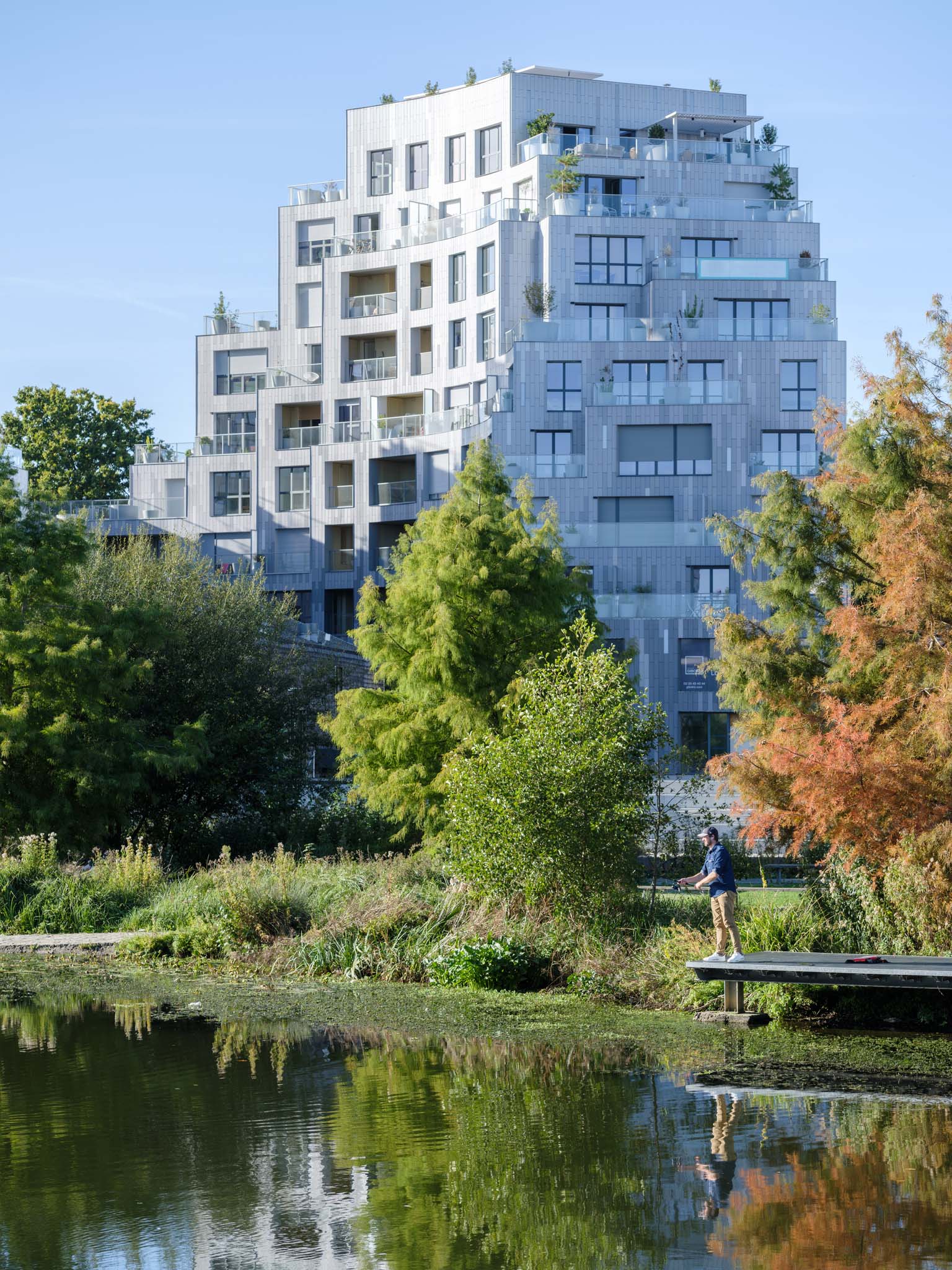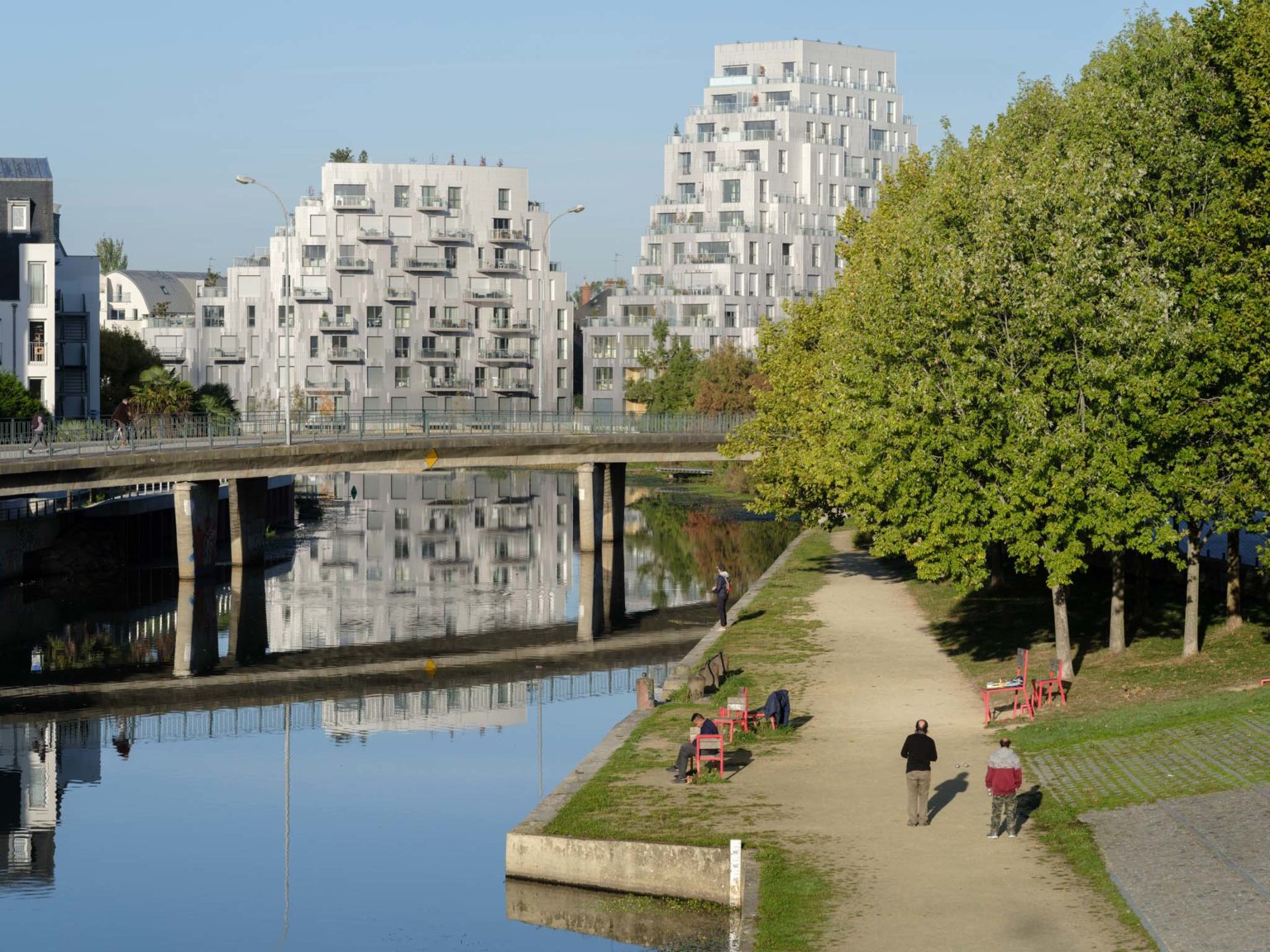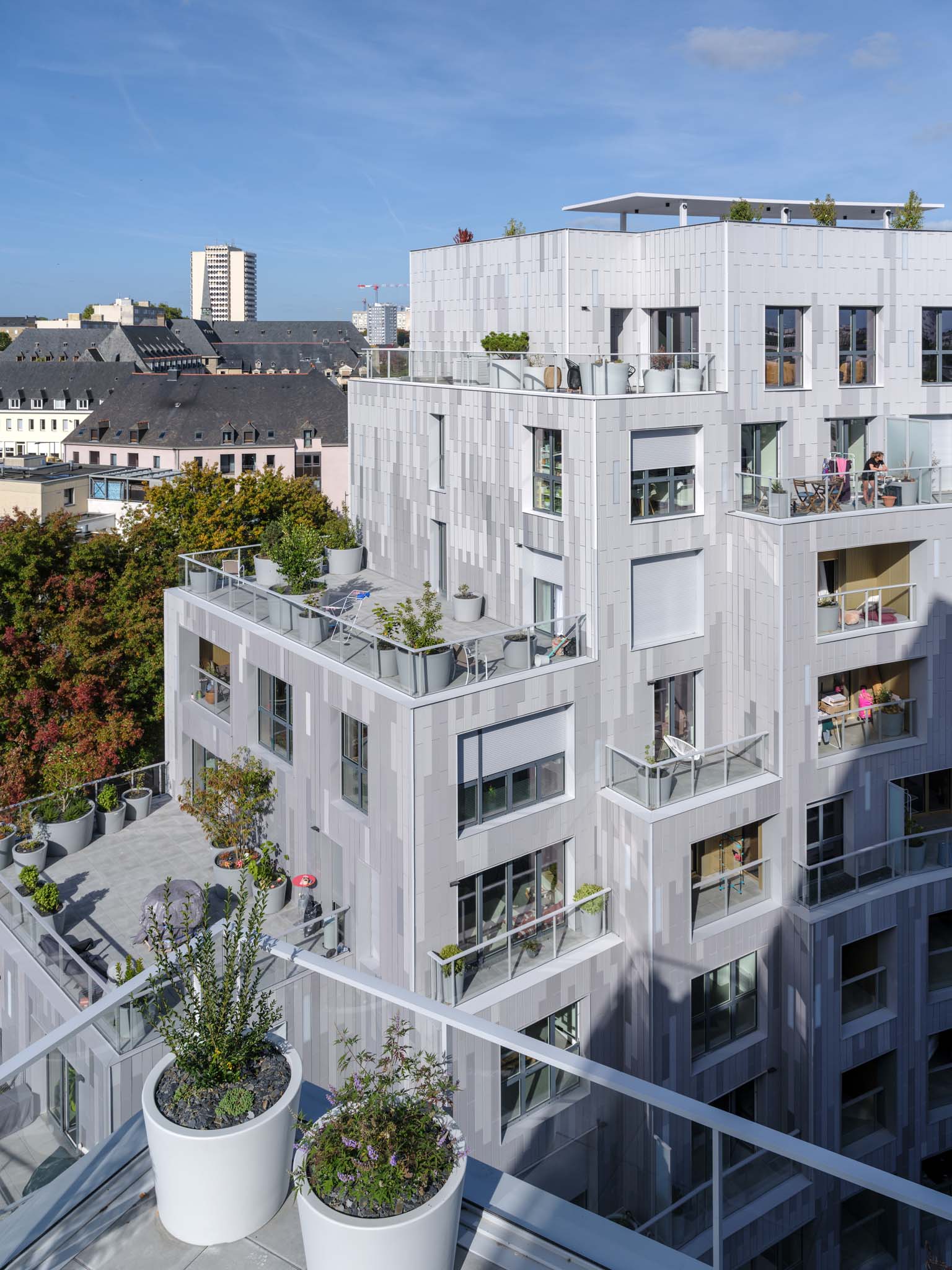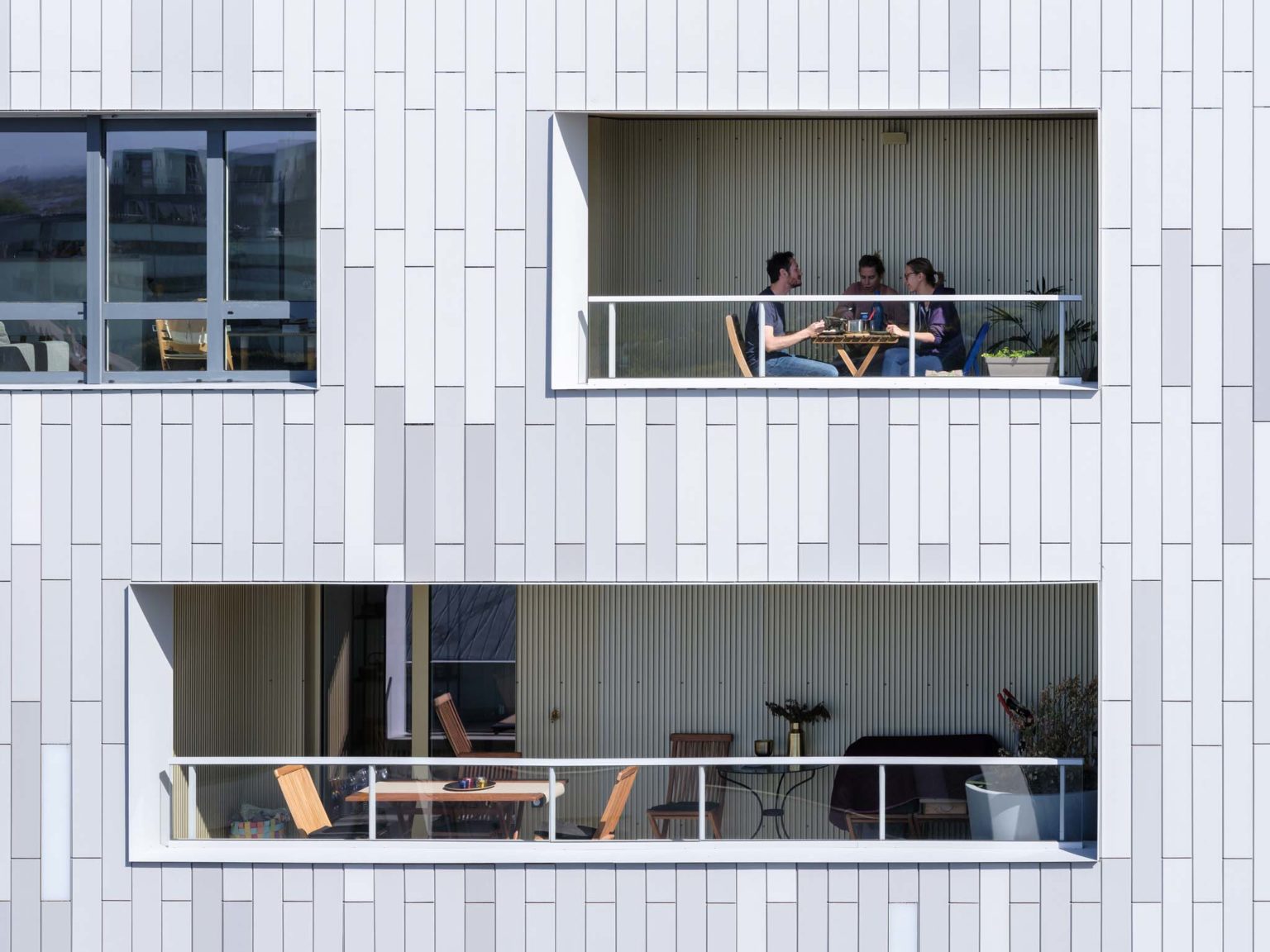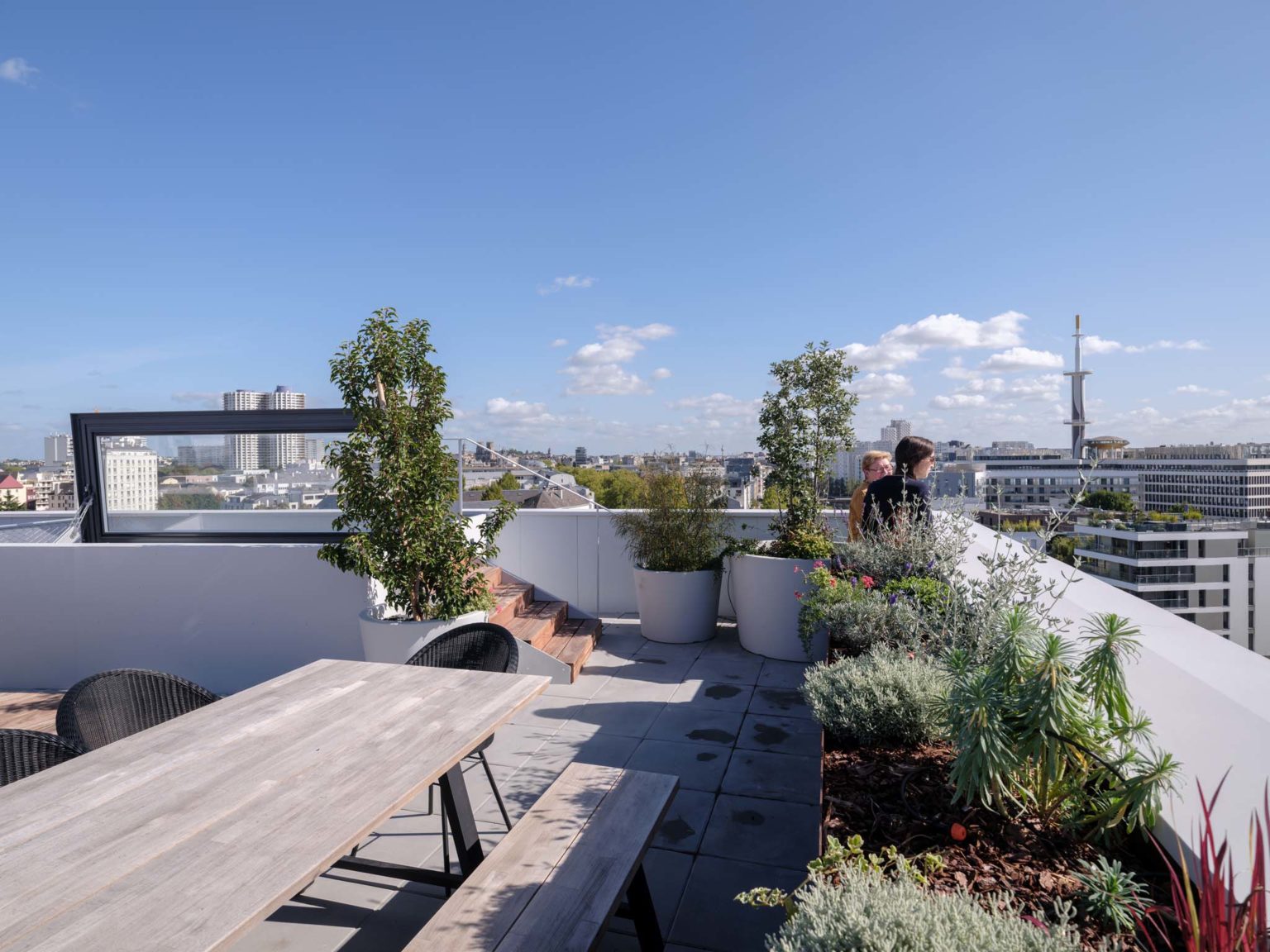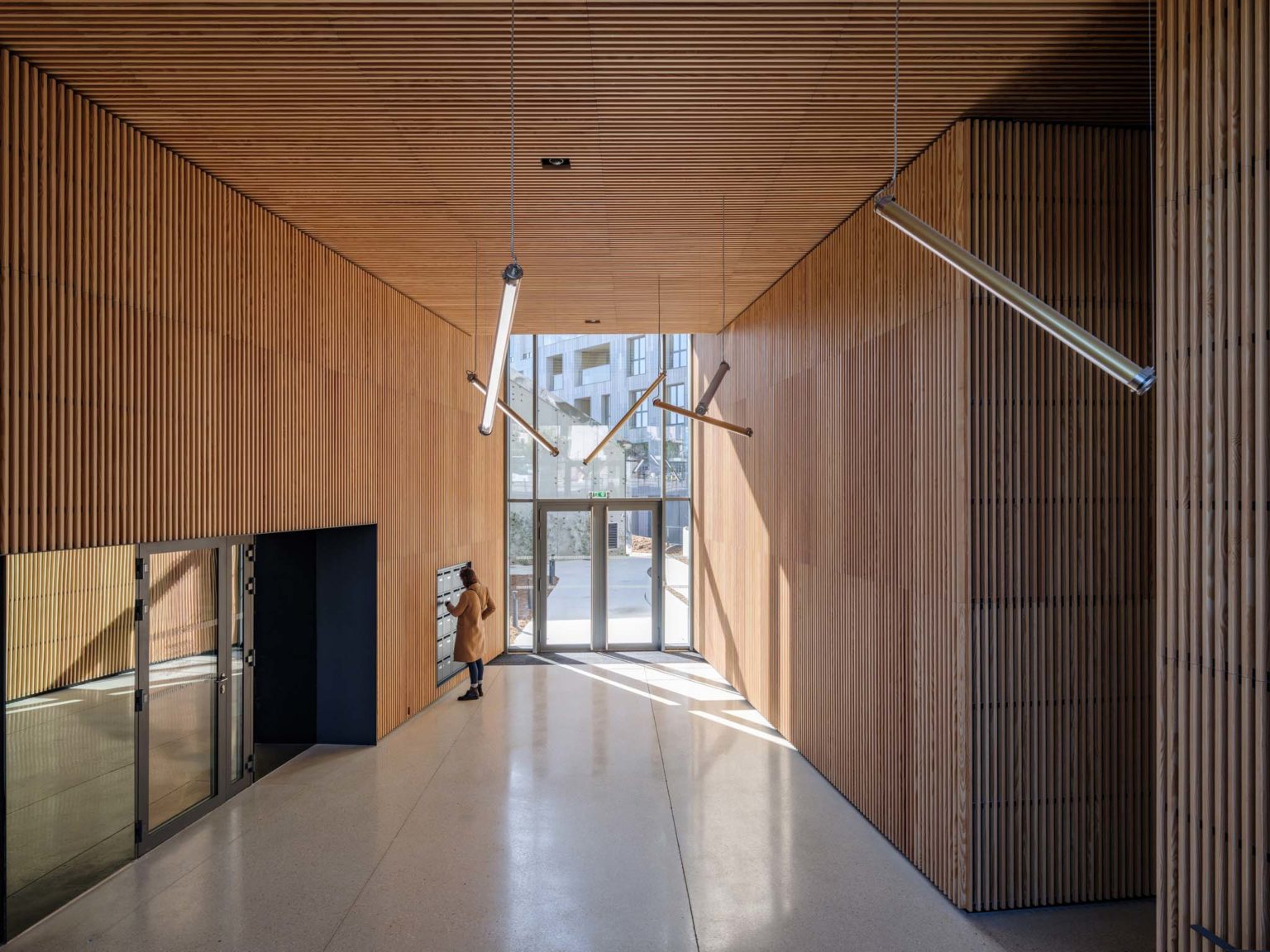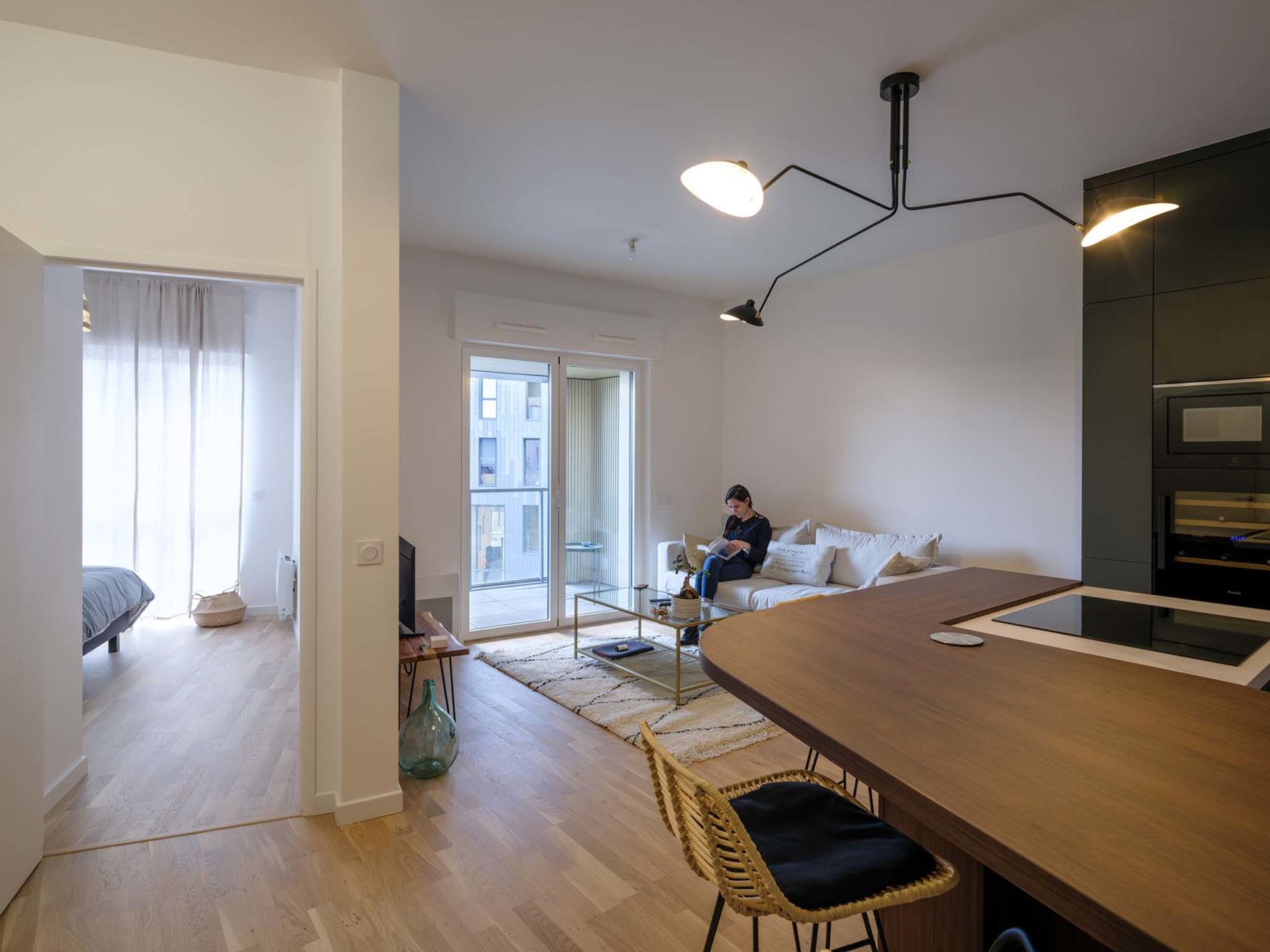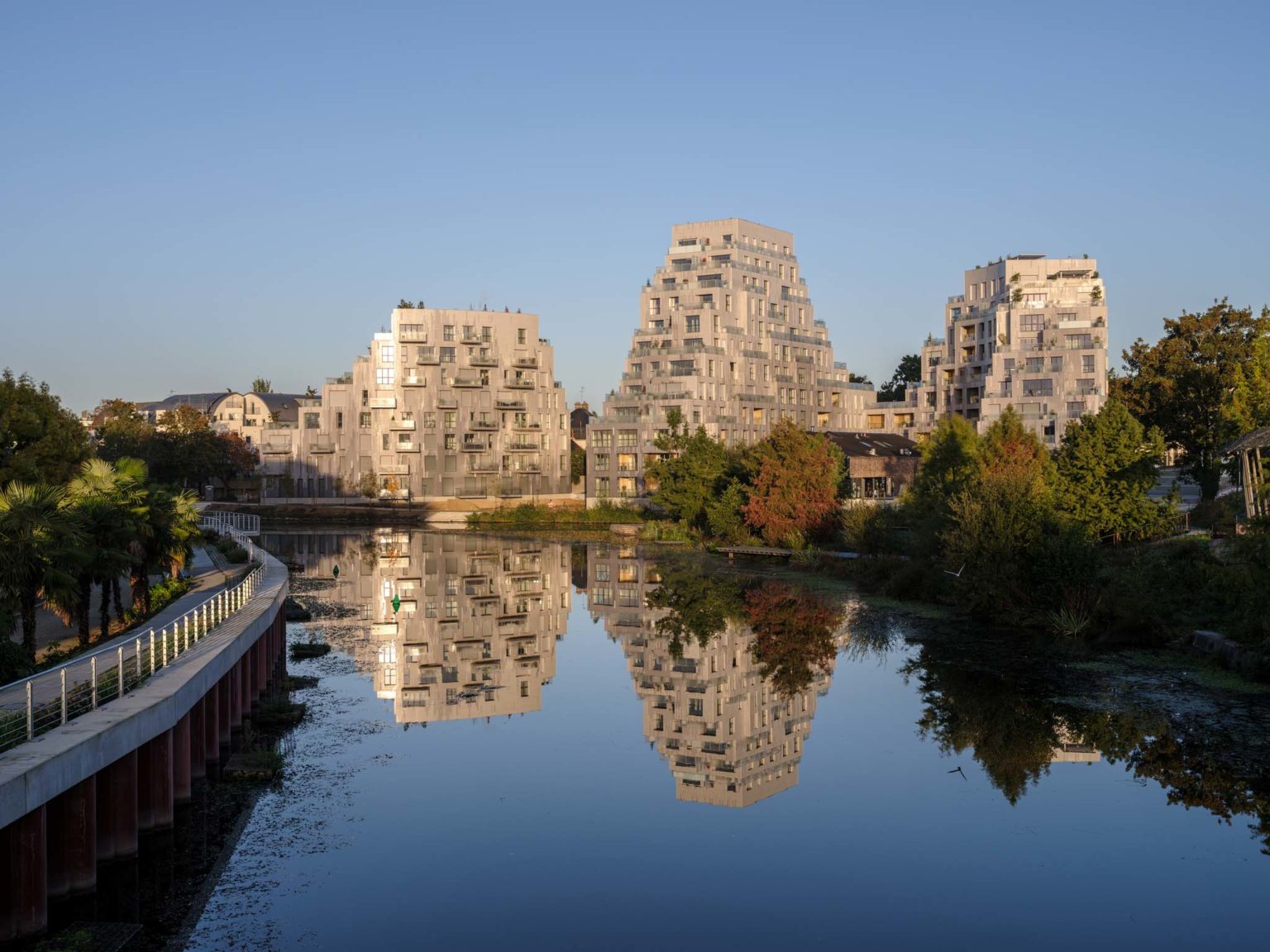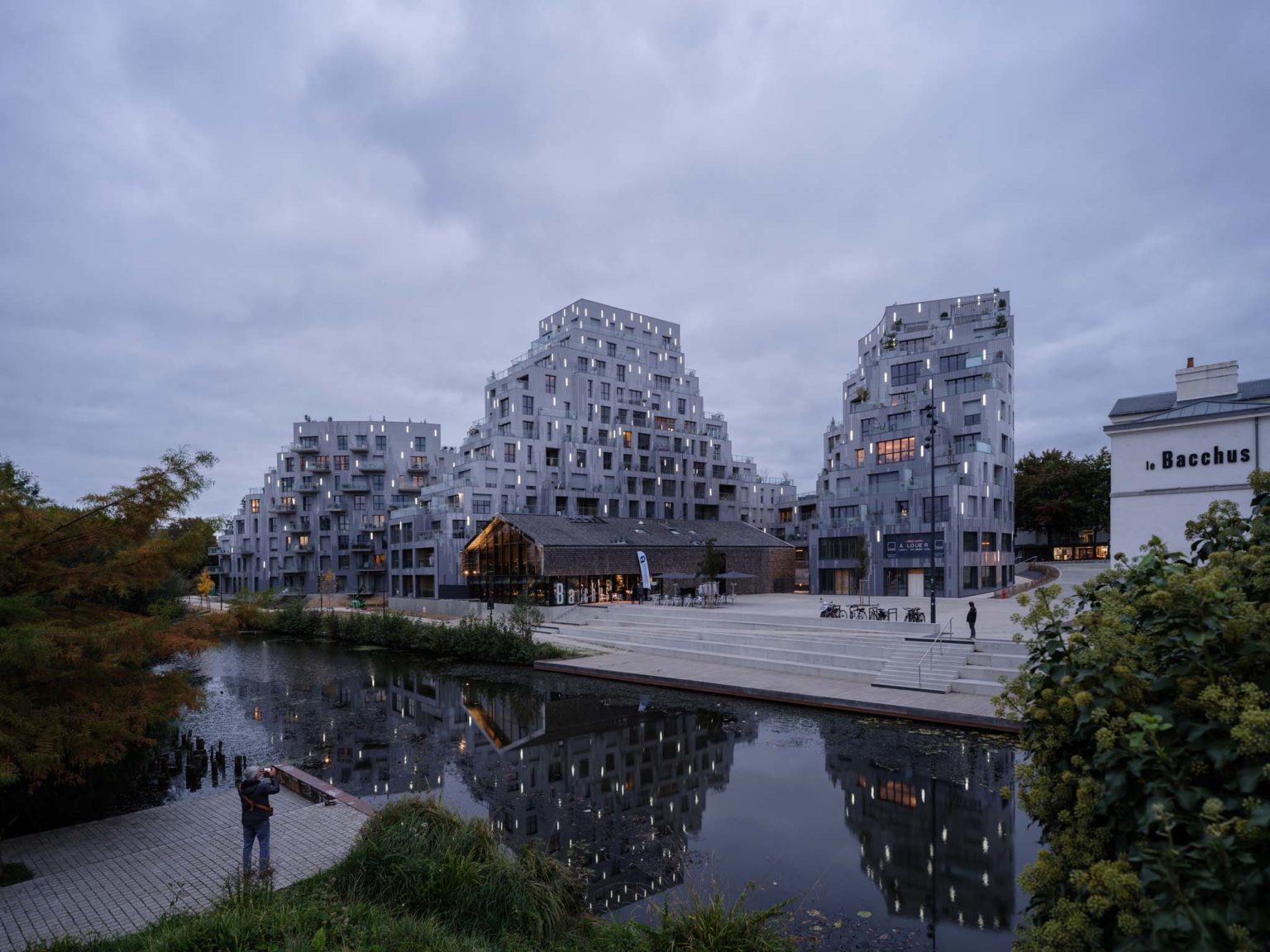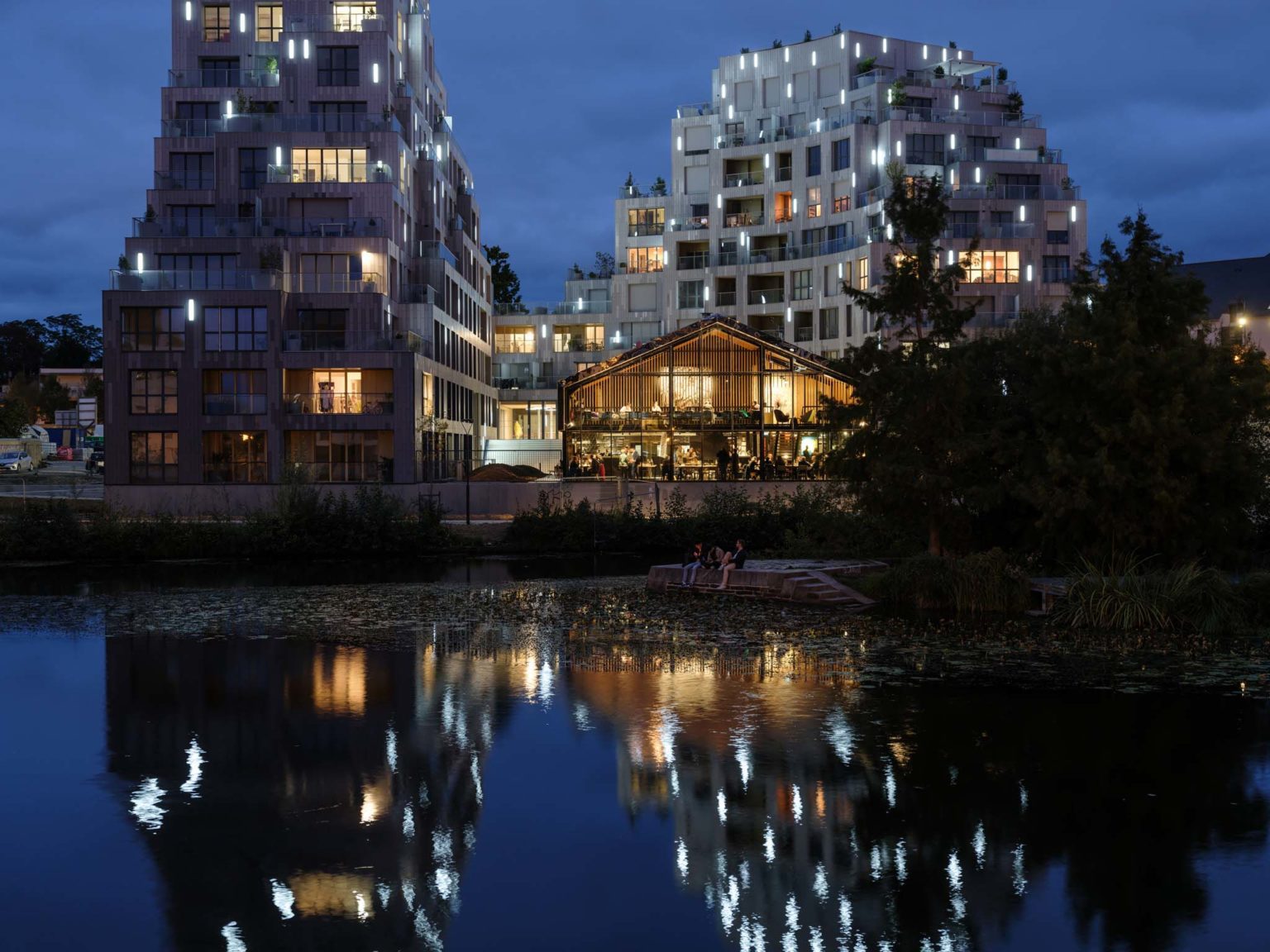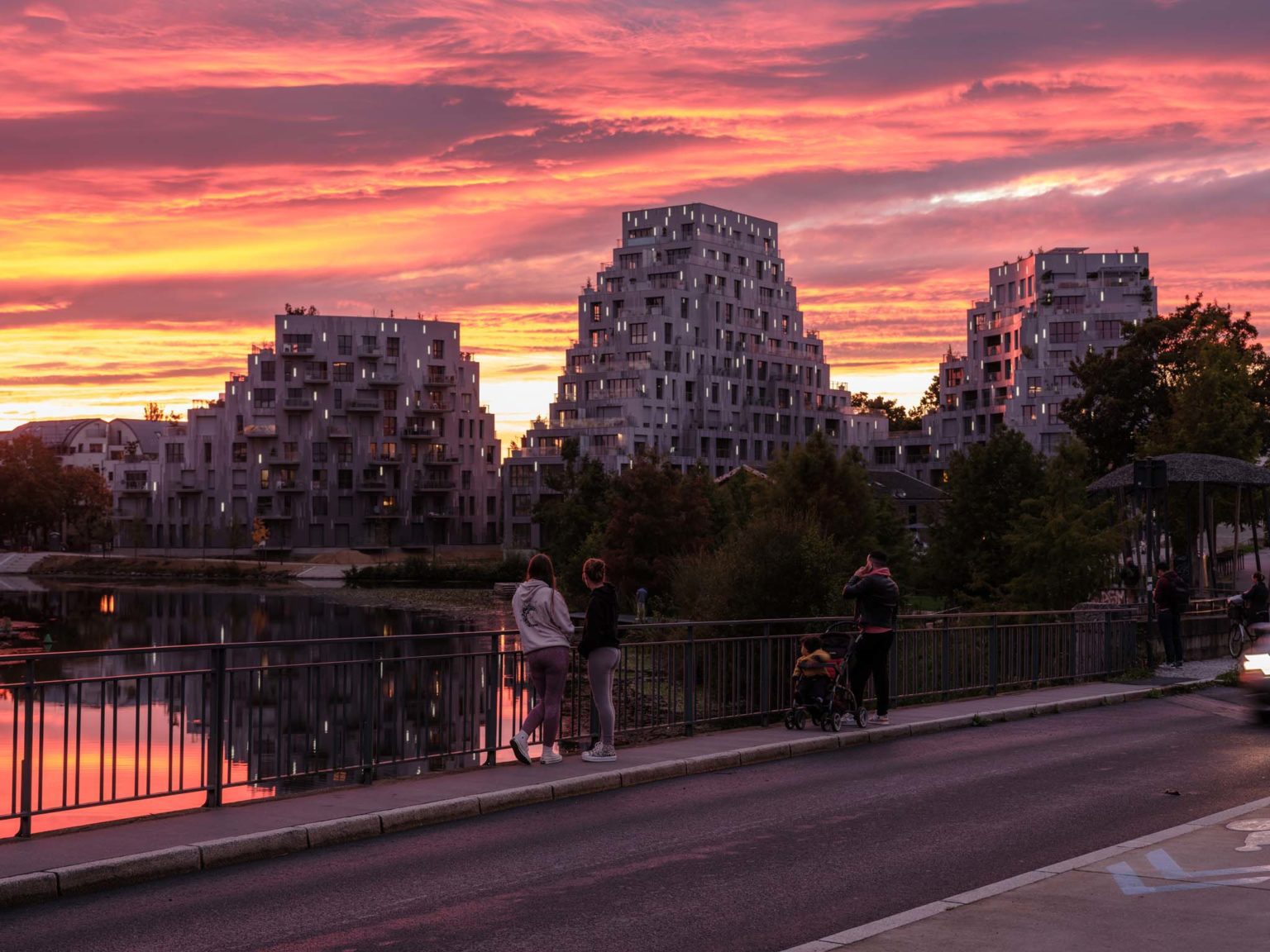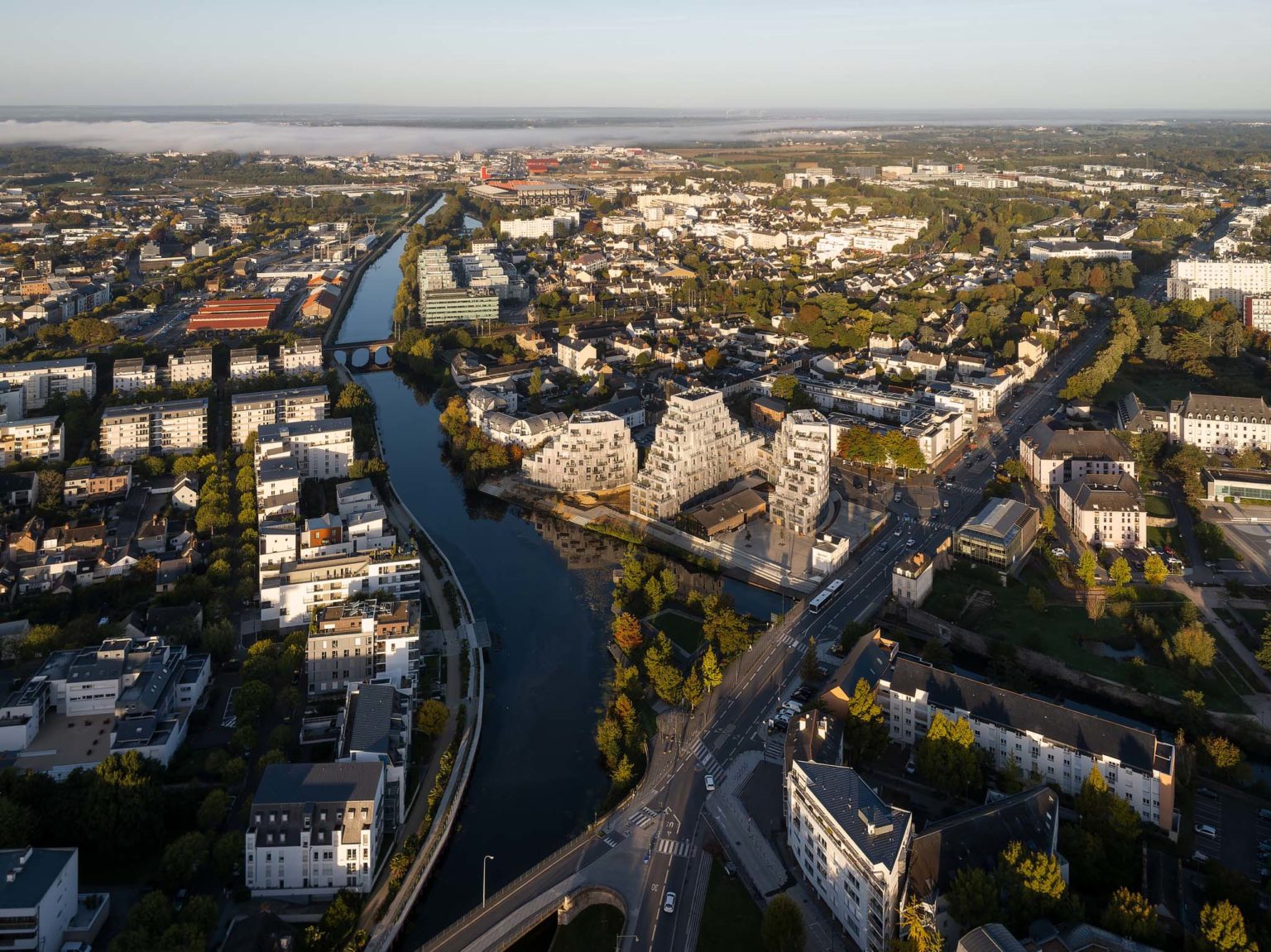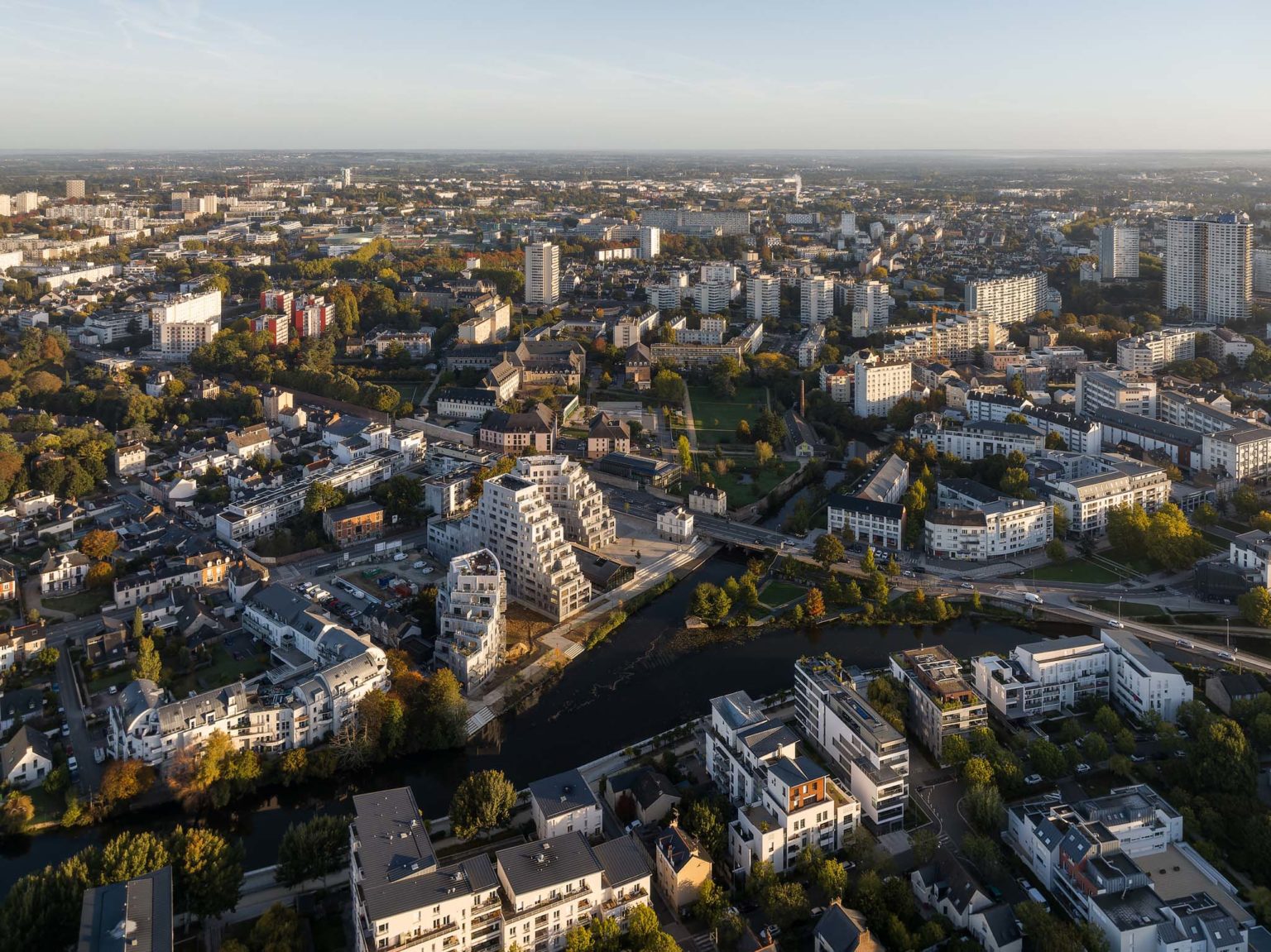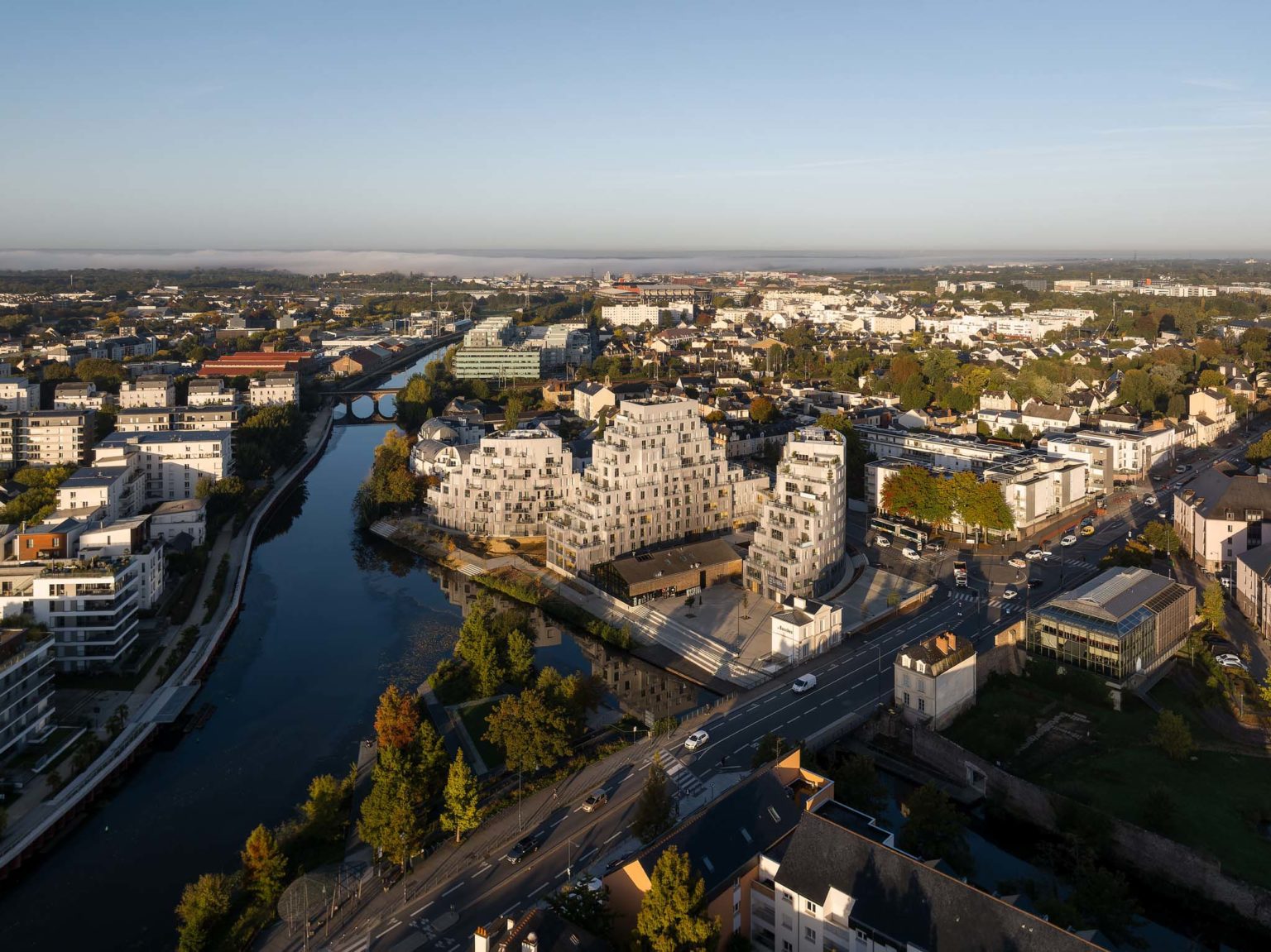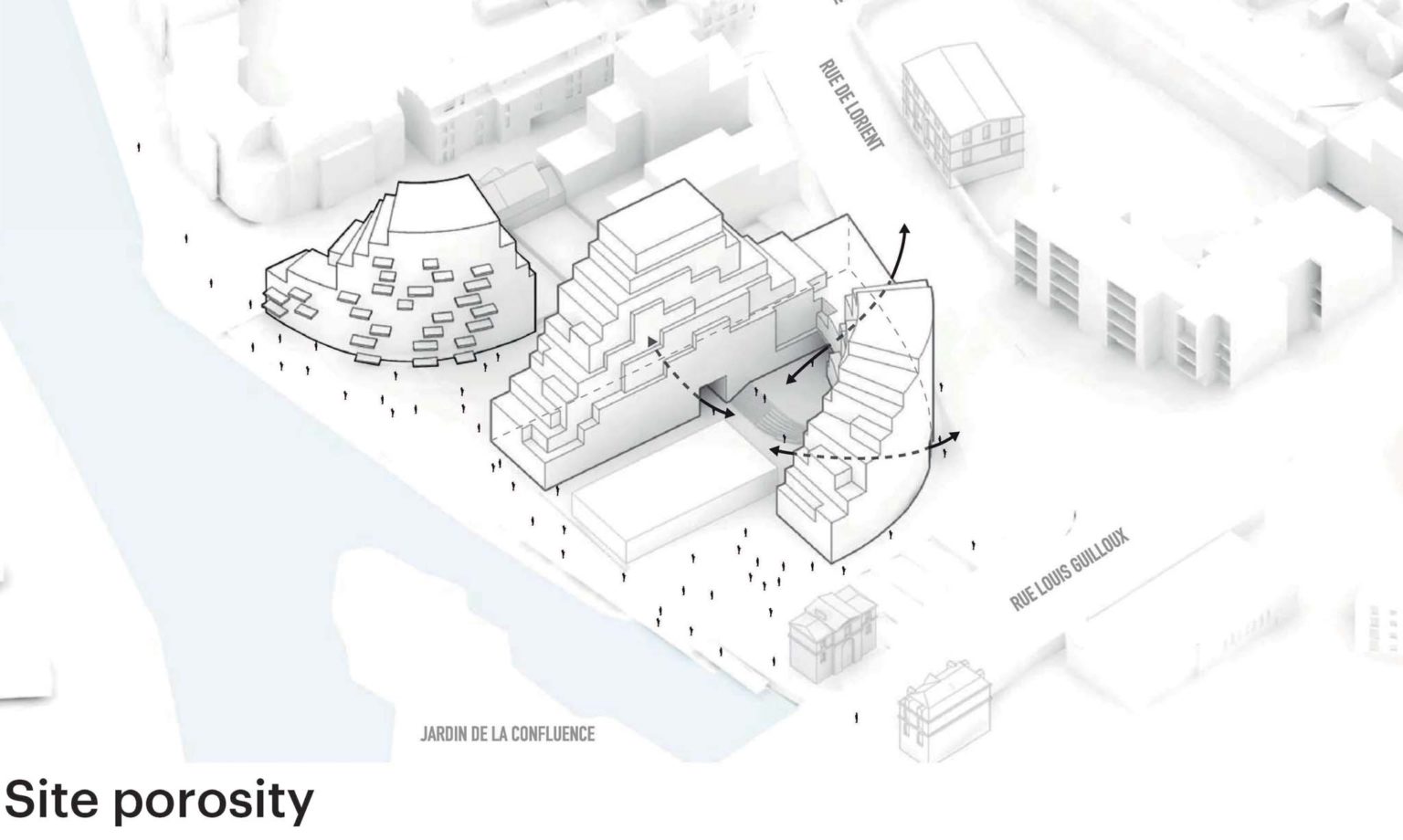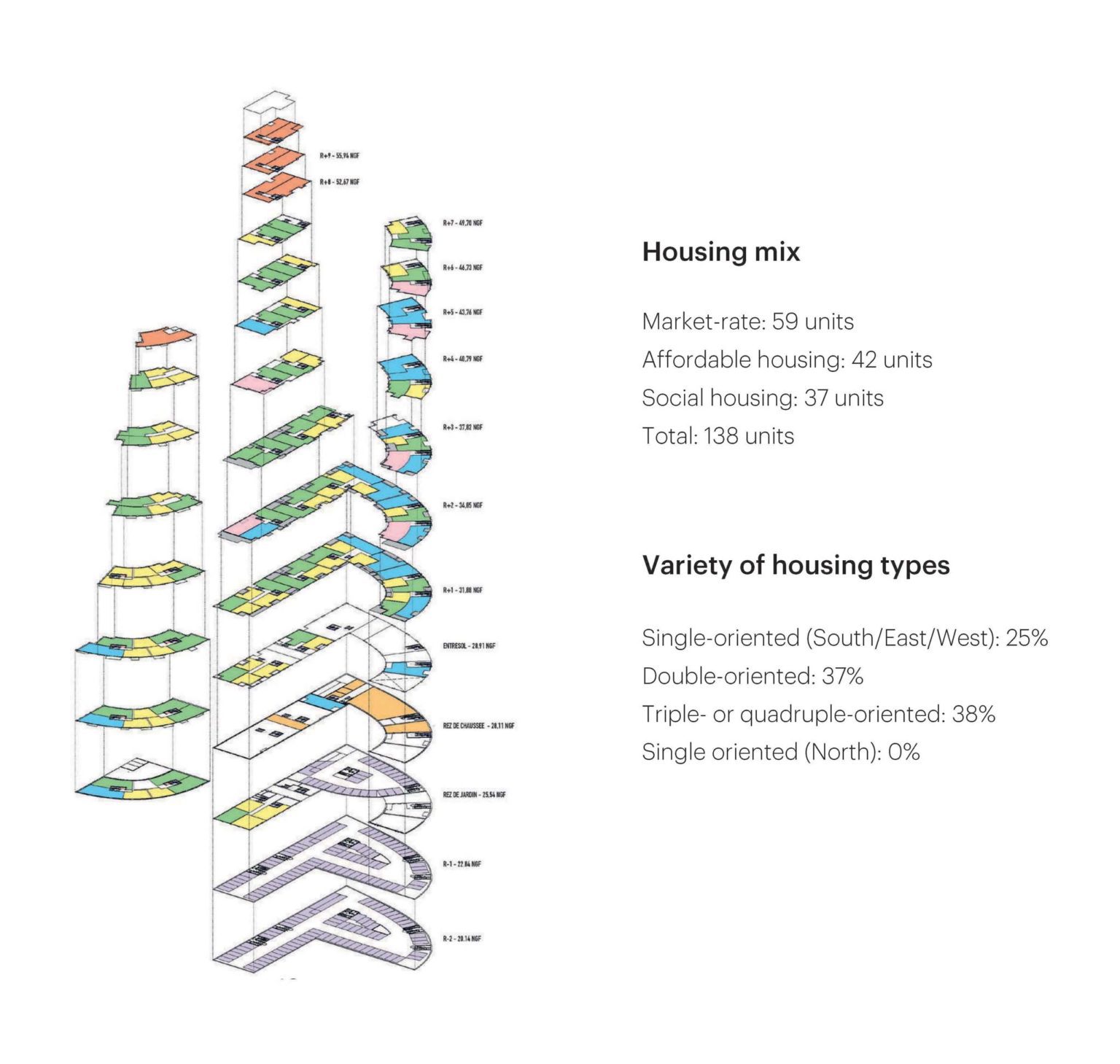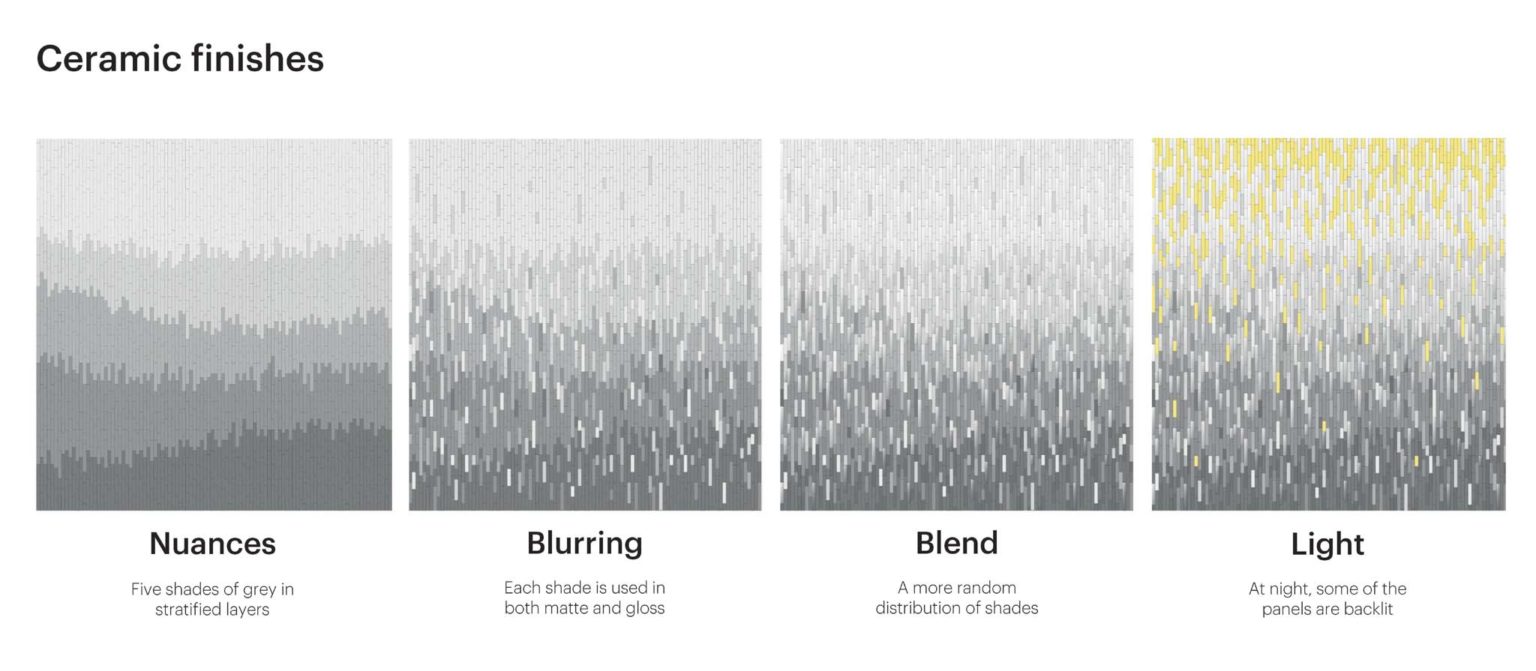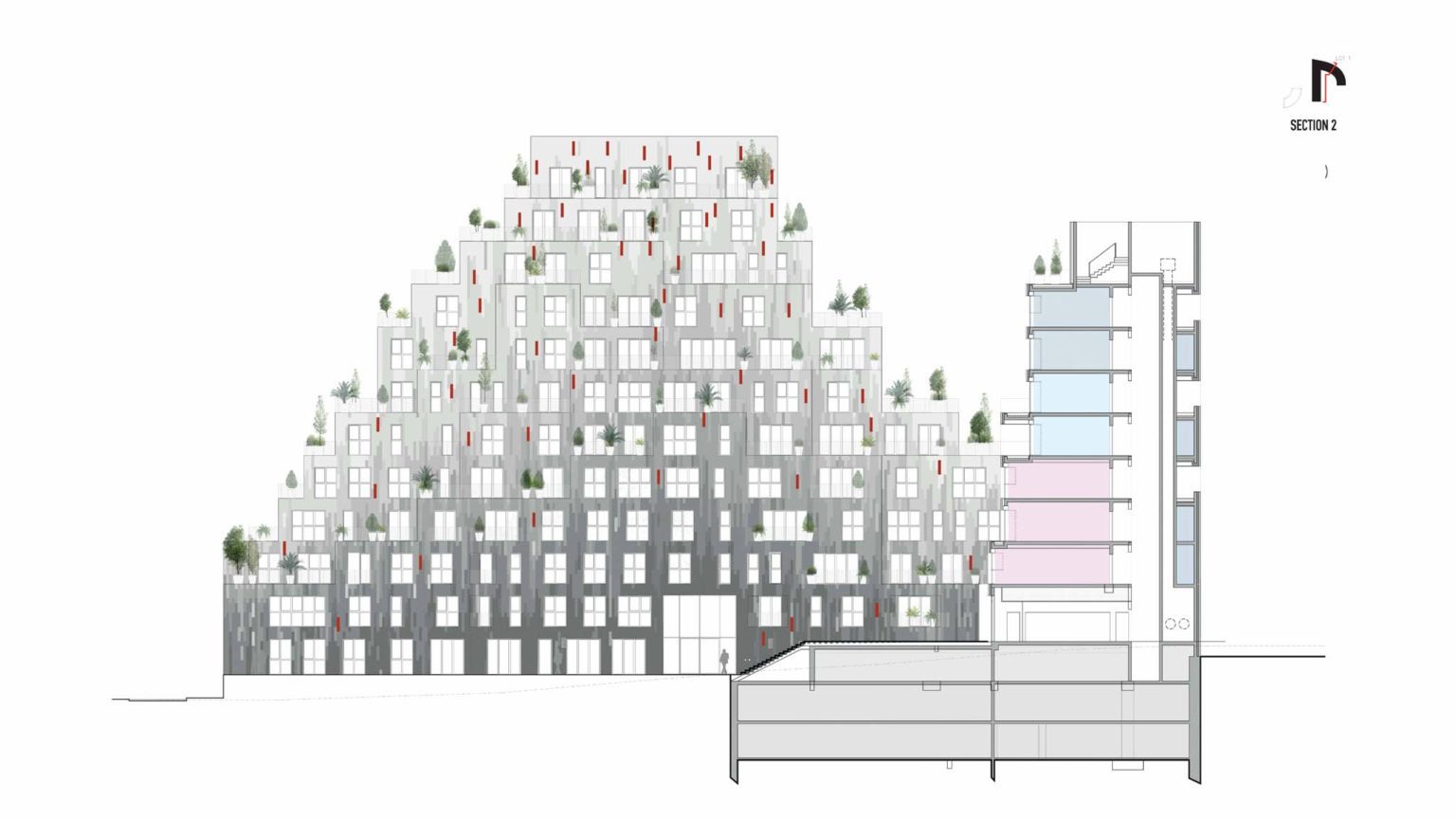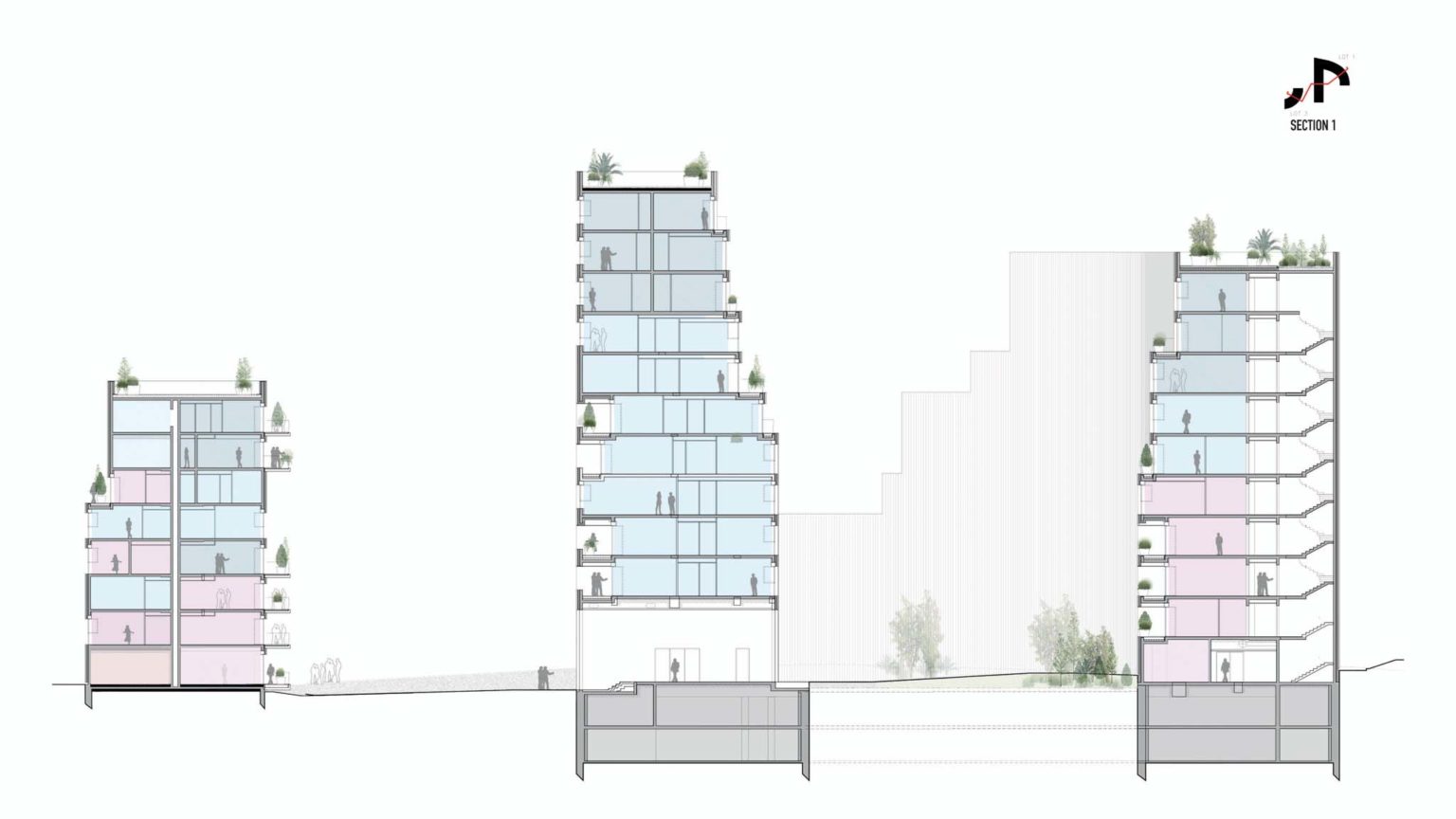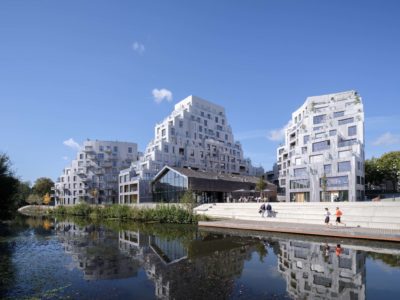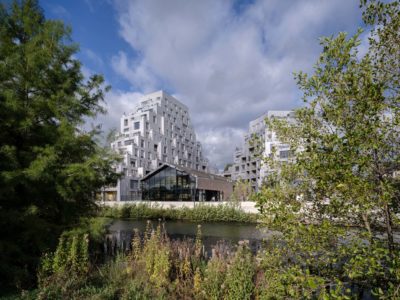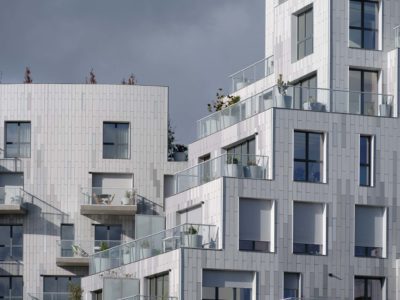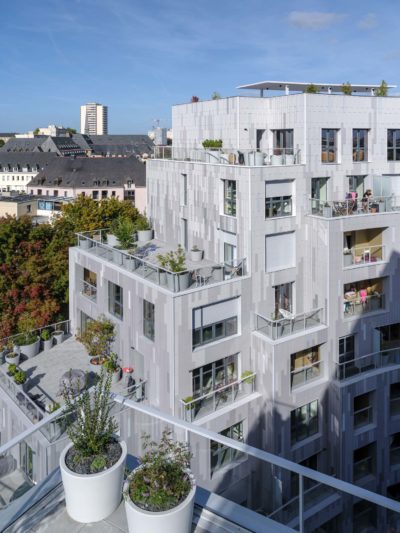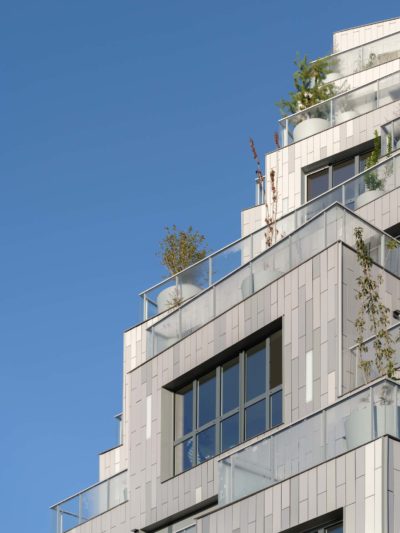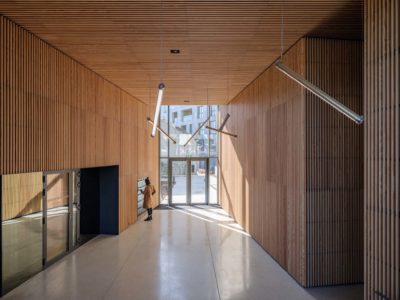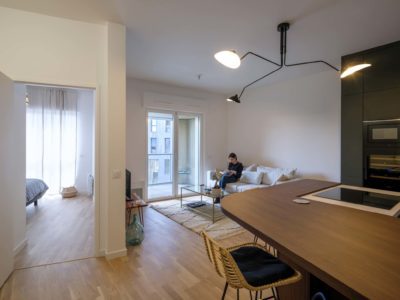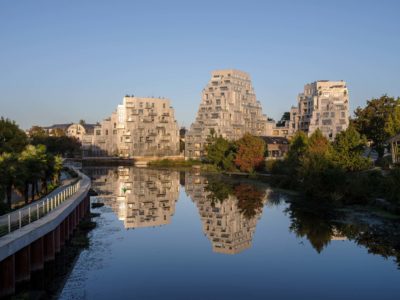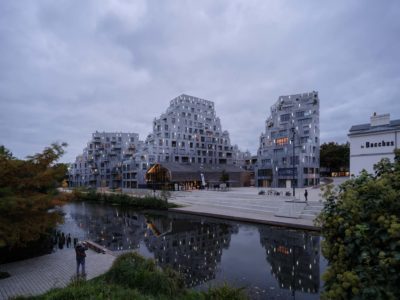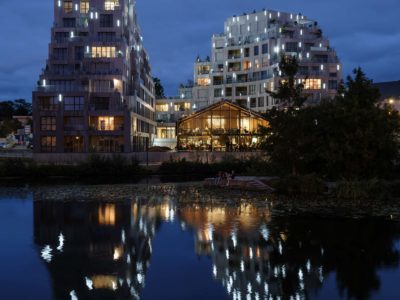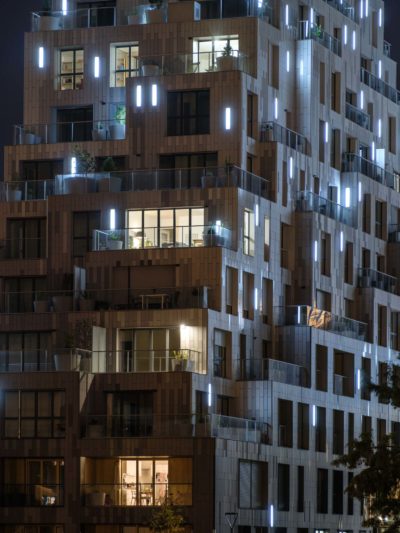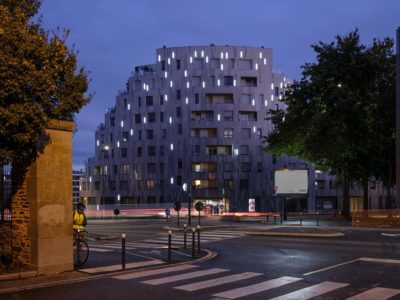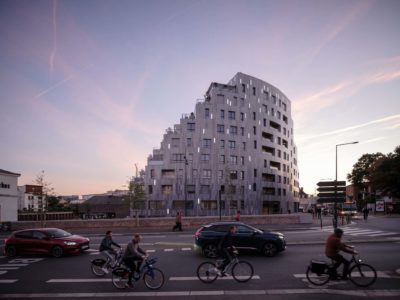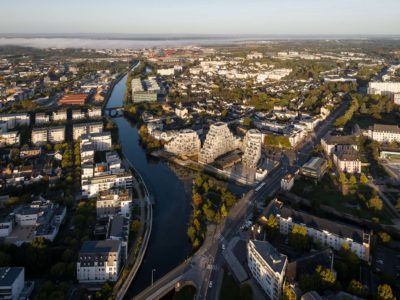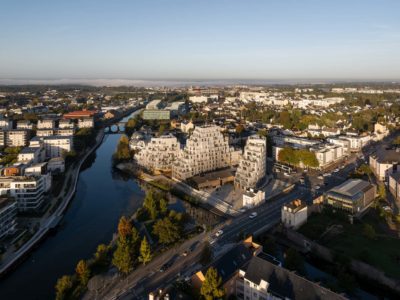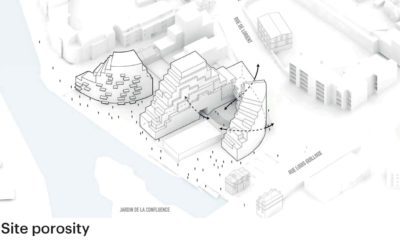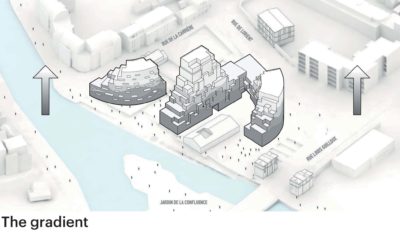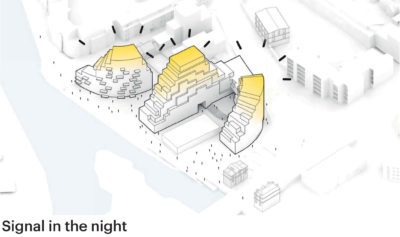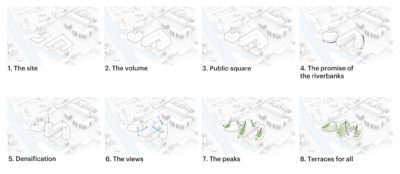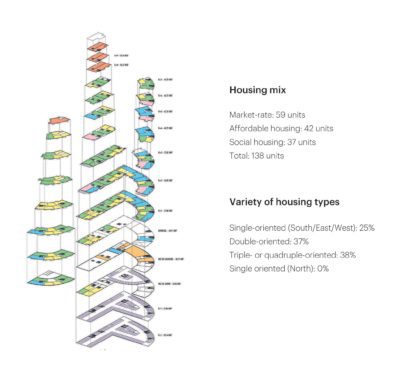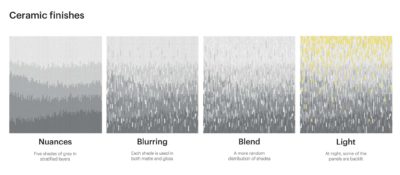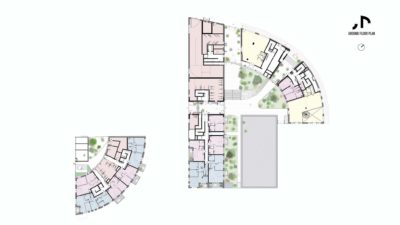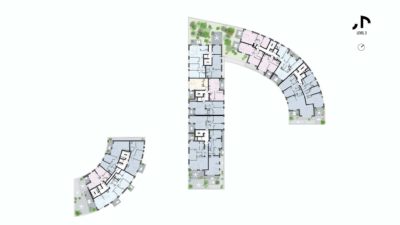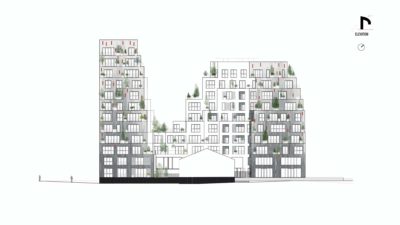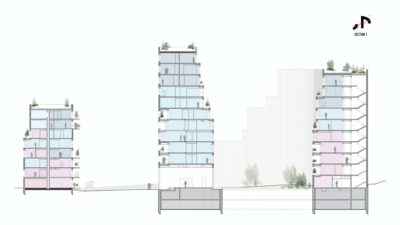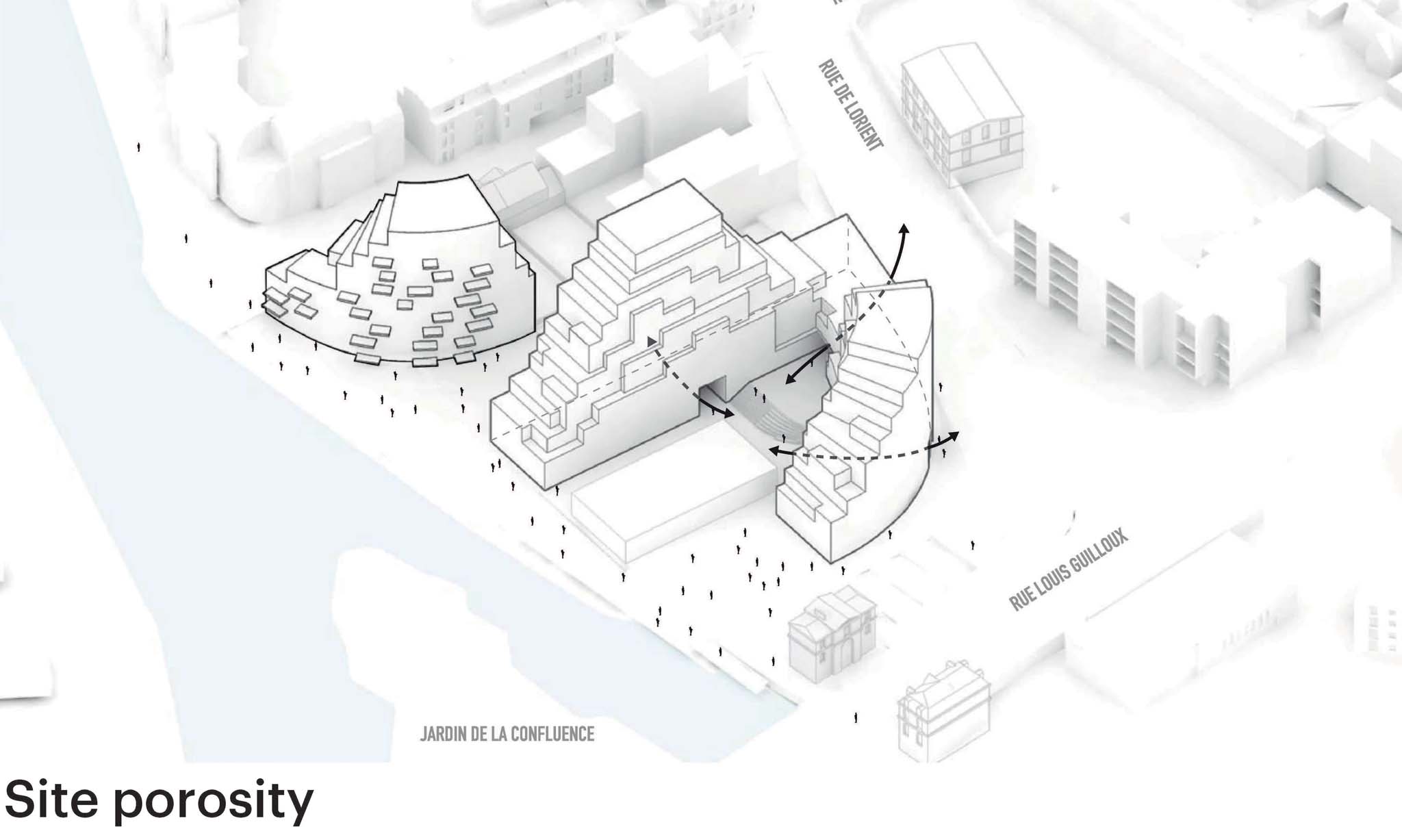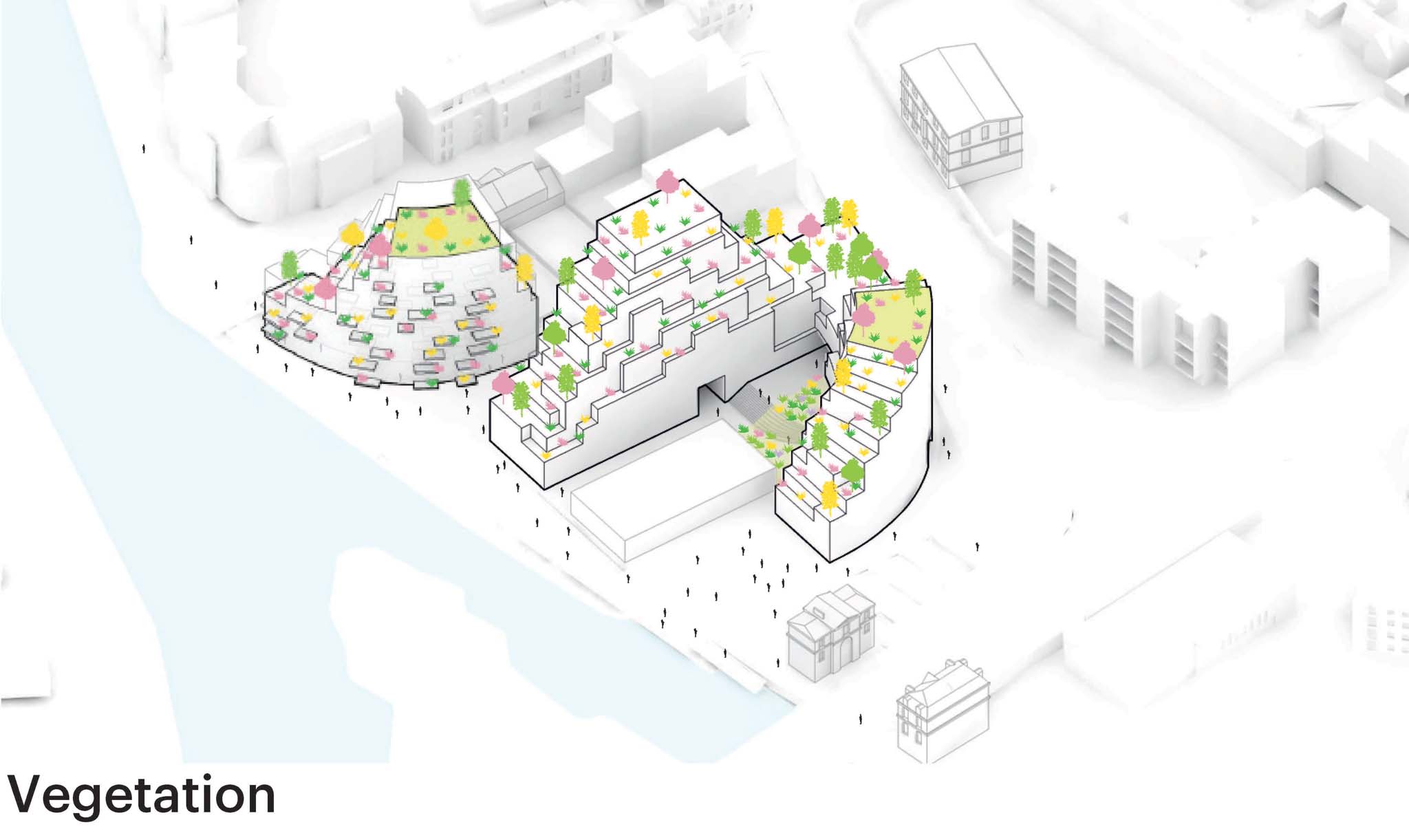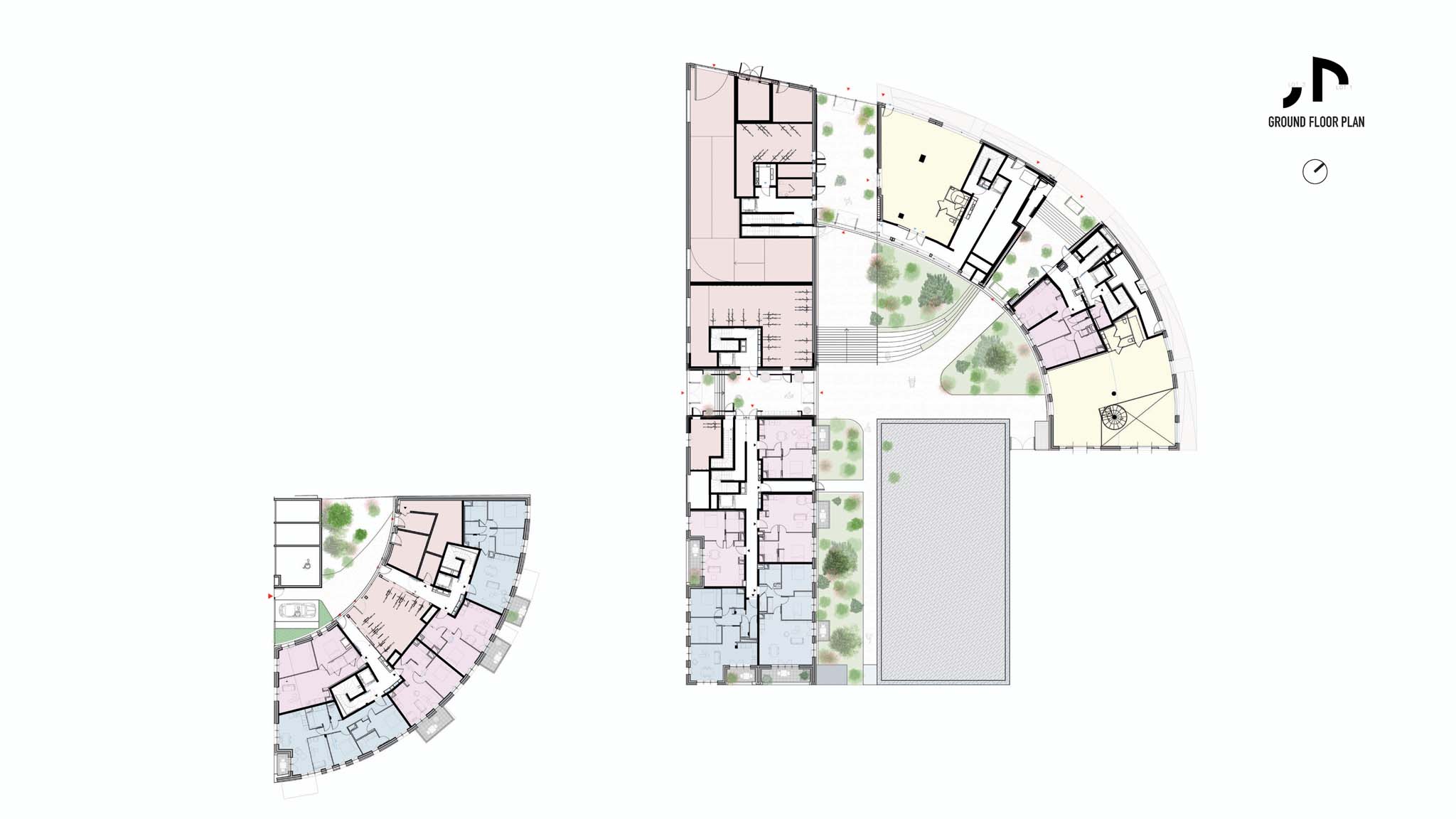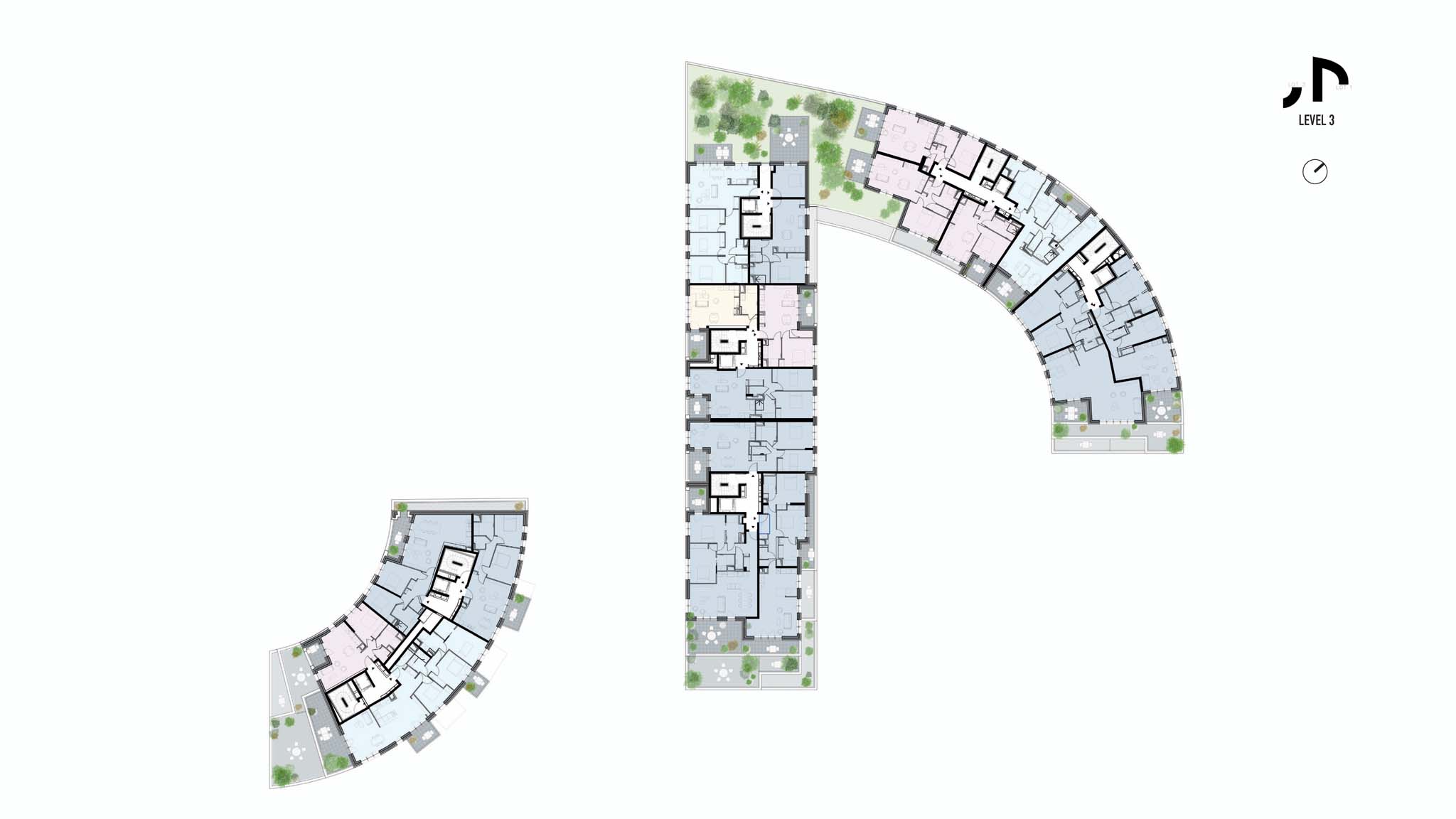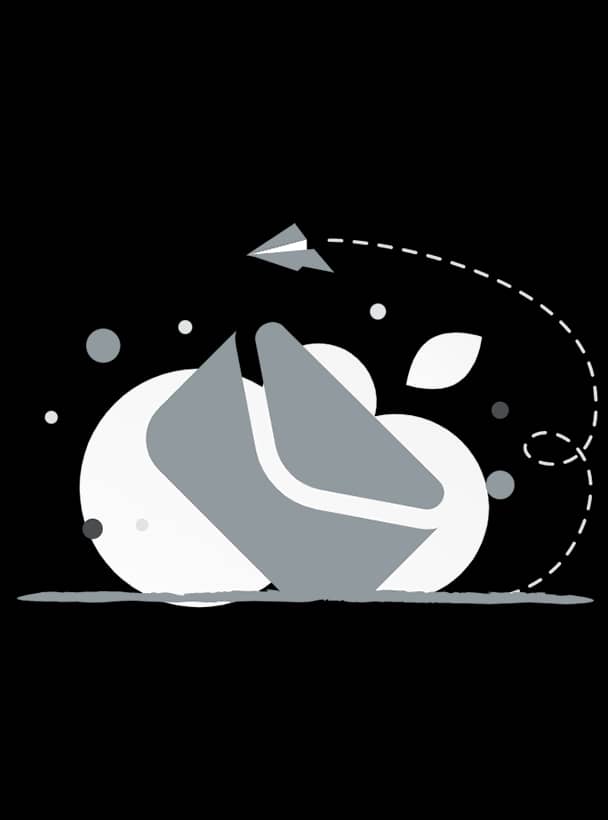Project Credits & Specs:
- Architects: MVRDV
- Photographs: Ossip van Duivenbode
- Location: Rennes, France
- Area: 10,550 m2
- Year: 2022

MVRDV, along with co-architects ALL for real estate developer Groupe Giboire, has completed Ascension Paysagère, a residential complex at the confluence of two rivers in the west of Rennes, France. Occupying a crucial transitional space between the Rennes’ center and its outer reaches, the 12-story, 10,550-square-metre complex brings much-needed density in the context of the city’s outward growth, providing 138 homes in a variety of sizes and price ranges – including 37units of social housing – as well as commercial spaces and pleasant new public spaces in a green waterside environment.


In 2018, the French magazine l’Express called Rennes the most liveable city in France and, combined with the arrival of a new TGV connection in 2017, this attractiveness has led to continued population growth. The many heritage buildings in the city’s center have shifted this expansion pressure outwards, requiring the periphery to grow either outwards into the countryside or – preferably – upwards with a pleasant approach to densification. Positioned precisely where the Ille River joins the Vilaine, across from the green floating park of the Jardin de la Confluence, at the end of the now pedestrianized thoroughfare of Mail François Mitterrand, Ascension Paysagère’s highly visible location required an exemplary approach to this perimeter densification.
Ascension Paysagère takes inspiration from geological formations. The project comprises two curving buildings, one large and one small, with gradually receding slopes. By the river, and at points where the project approaches its neighbors, the buildings are low, acknowledging the expansive, low-rise context. Elsewhere, however, the design gradually steps up into three peaks, reaching the maximum 12-story height in the center of the site. The terraces created by these gradual step-backs are decked with pots filled with greenery, extending the lush atmosphere of the riverbank upwards to the apartments even at the very top of the building. On the western corner of the larger block, in between the building’s two ‘peaks’, a garden including fruit trees emphasizes this green approach.
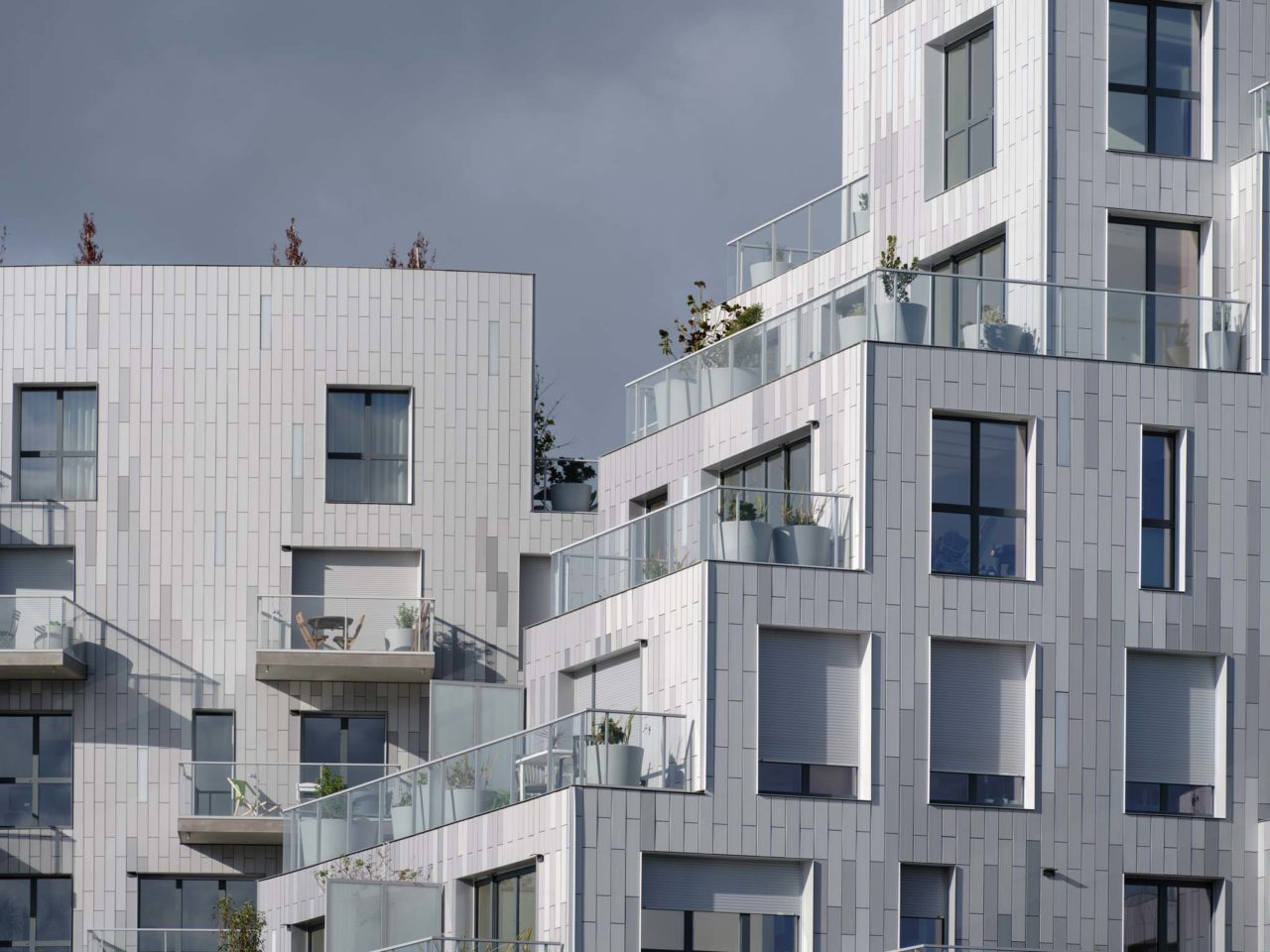



The façade reinforces the connection to geology. It features both matte and glossy ceramic panels in five different tones of grey, arranged into stratified layers: dark and mostly matte near to ground level, and lighter and glossier at the top levels. At night, lighting reinforces this effect, with more lights integrated into the ceramic panels at the top of the building. As a result, the design seems as if it truly belongs – an outgrowth of the environment itself, which feels natural even as it significantly densifies this part of the city.
“In Ascension Paysagère, we have delivered a project just as we hoped it would be, and exactly what is needed in this location”, says MVRDV founding partner Nathalie de Vries. “With the river and the park opposite, the site offers a wonderful location for people to live. The challenge was to allow as many people as possible to live here without destroying those qualities. We do this by creating an ensemble of two buildings with silhouettes like small hills, covered with terraces and balconies to allow the inhabitants nice outdoor spaces that are already provided with large pots for plants and trees.”
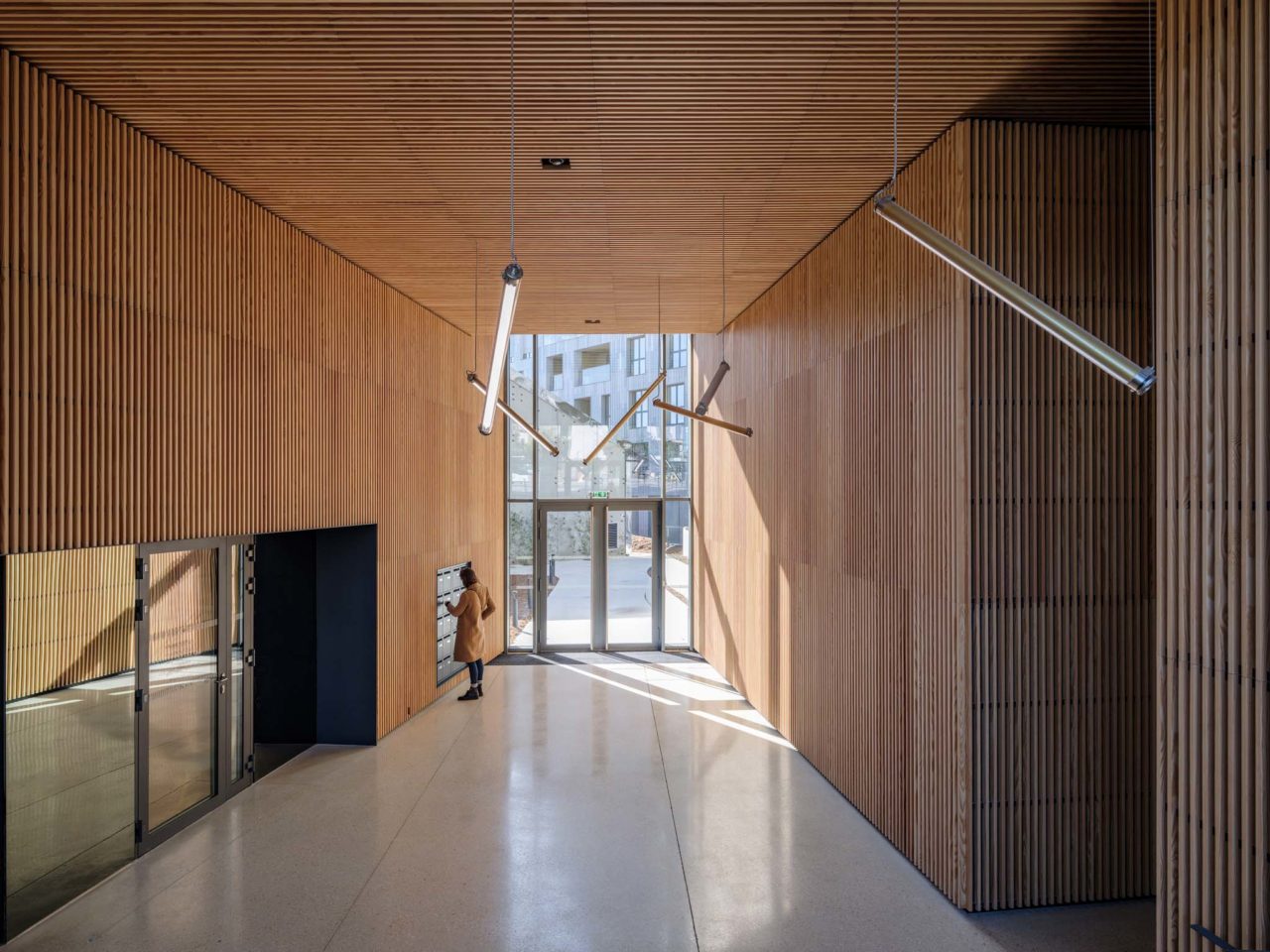

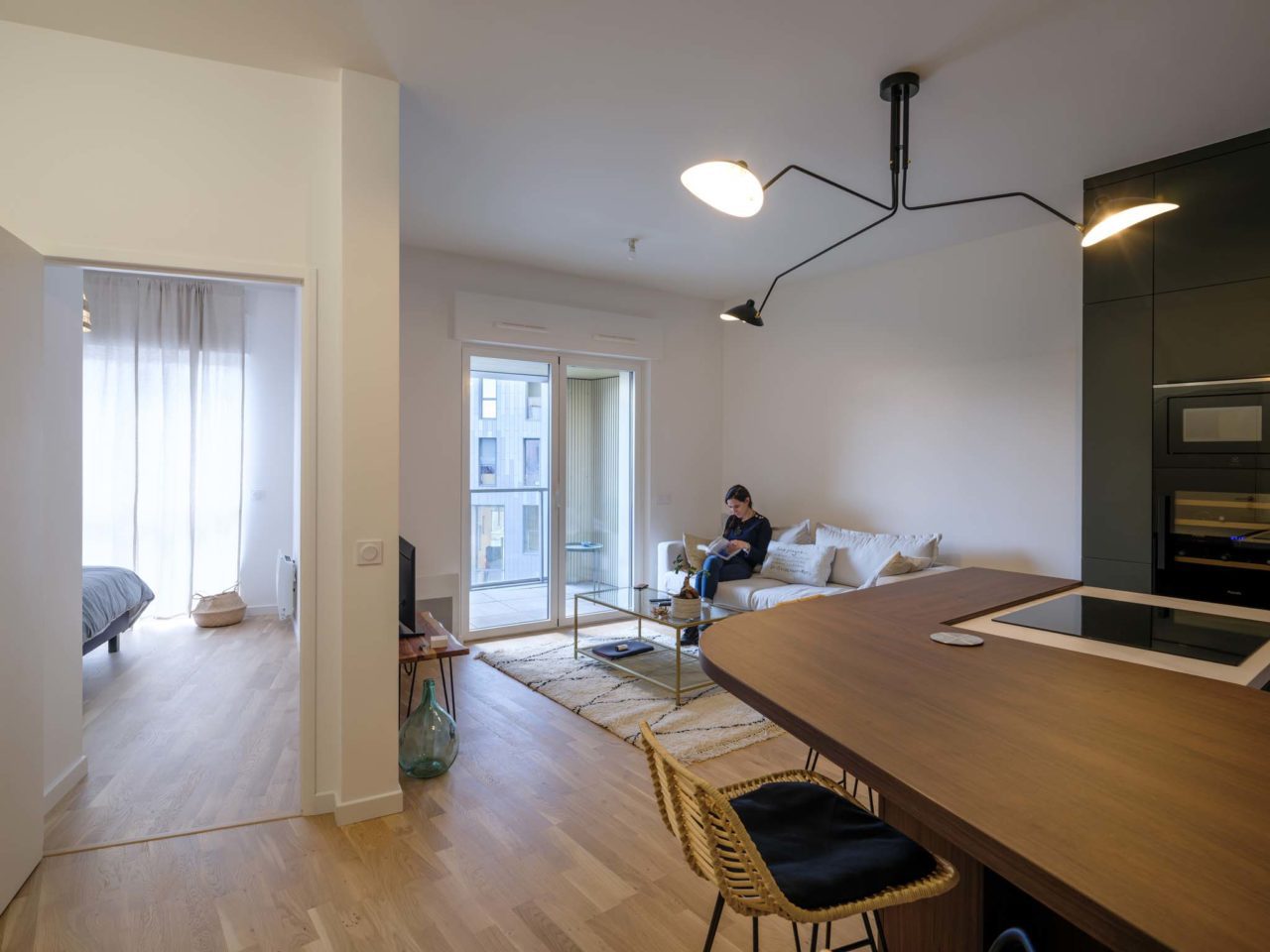

Every apartment is provided with an outdoor space – either a terrace, a balcony, or a loggia. Each of these comes complete with custom plant pots fitted with automatic irrigation as well as a dedicated water tap to help residents care for their piece of the landscape. The terraces create a village-like atmosphere that allows residents to greet their neighbors above and below. At ground level, the curves of the buildings define a series of public spaces, with a green pedestrian street between the two blocks and a plaza at the water’s edge that leads to Le Bacchus, a restaurant and theatre that is embraced by the curve of the larger building. The entrances to the larger building are found in three inviting, wood-clad passages that punch through the building, creating generous meeting spaces and providing views and access to a secluded garden at the rear of the theatre restaurant. At the entrance to the site, a former renovated tax office is included in the urban plan, making the public square a mix of three architectural periods.
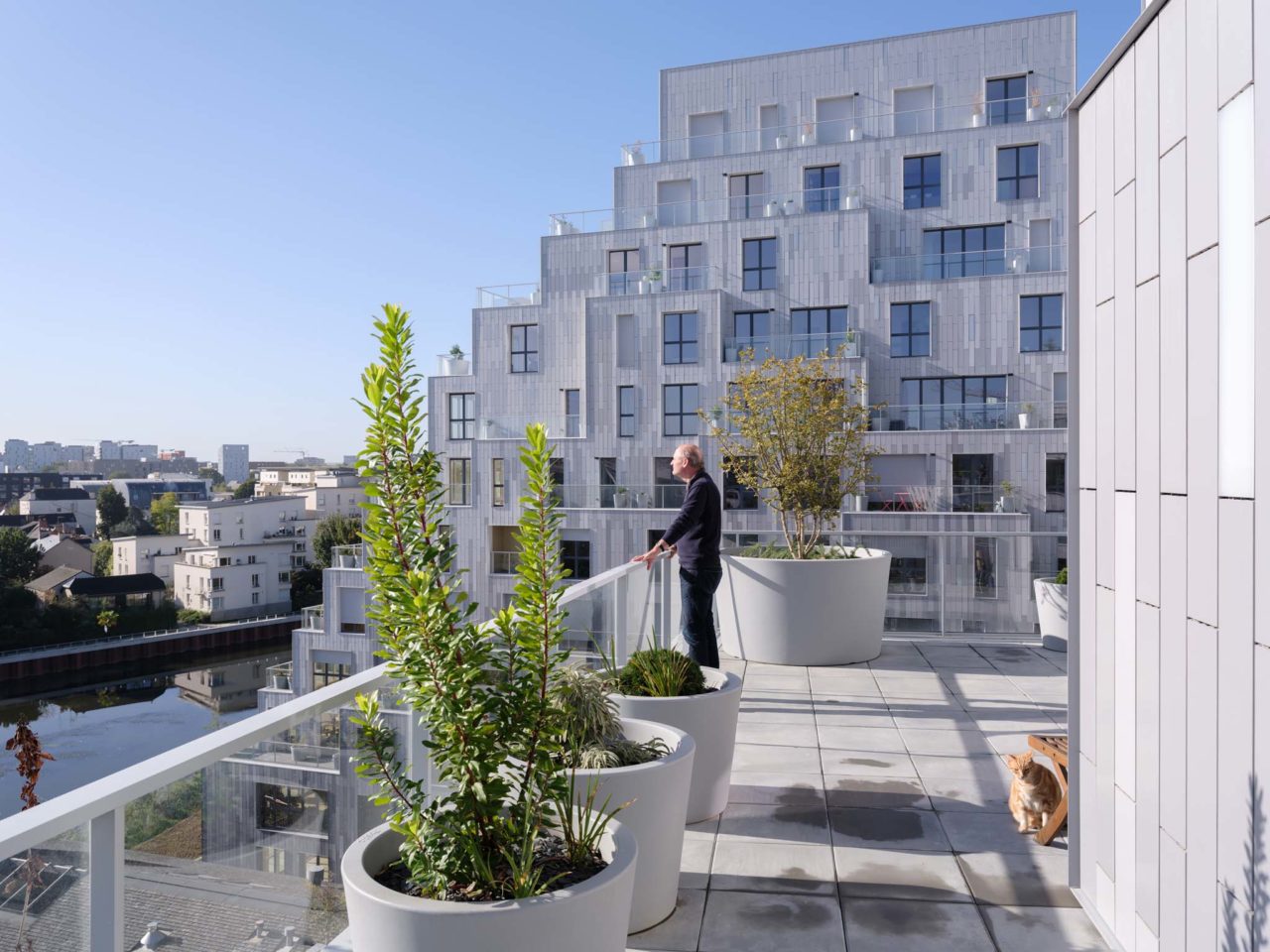
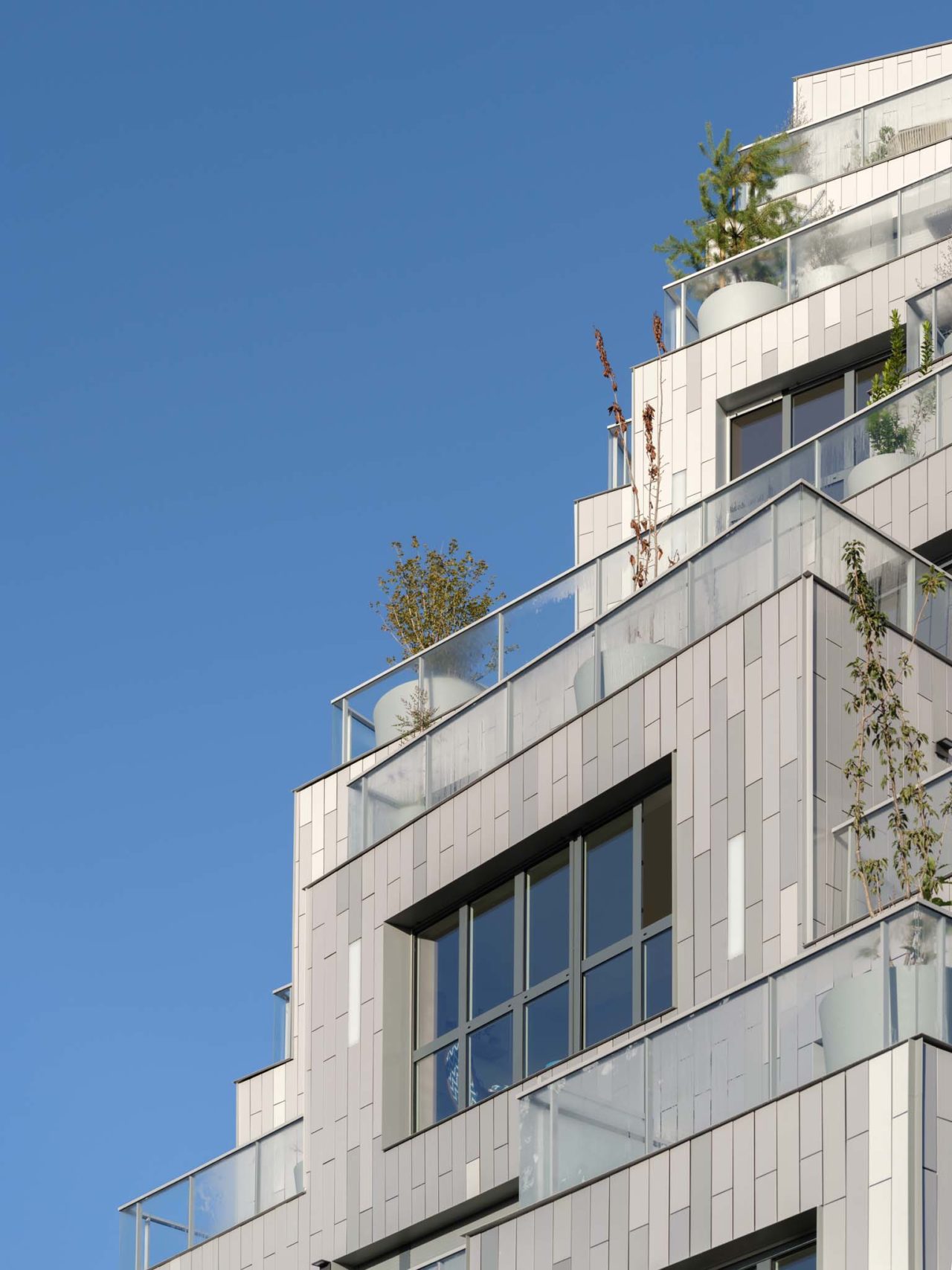


The project uses a variety of approaches to ensure sustainability and social responsibility. Densifying an urban area reduces the city’s need to expand into the surrounding landscape, and the parking garages include a total of 210 square meters for bicycle parking, including dedicated spaces for cargo bicycles and electric charging stations to encourage more sustainable transport options. The 34 apartments in the smaller building are completed to Passivhaus standards, giving them the potential to use dramatically less energy than typical apartments. Many of the apartments are double or even triple aspect, with windows on multiple sides of the building to allow cross ventilation and excellent natural light conditions inside.
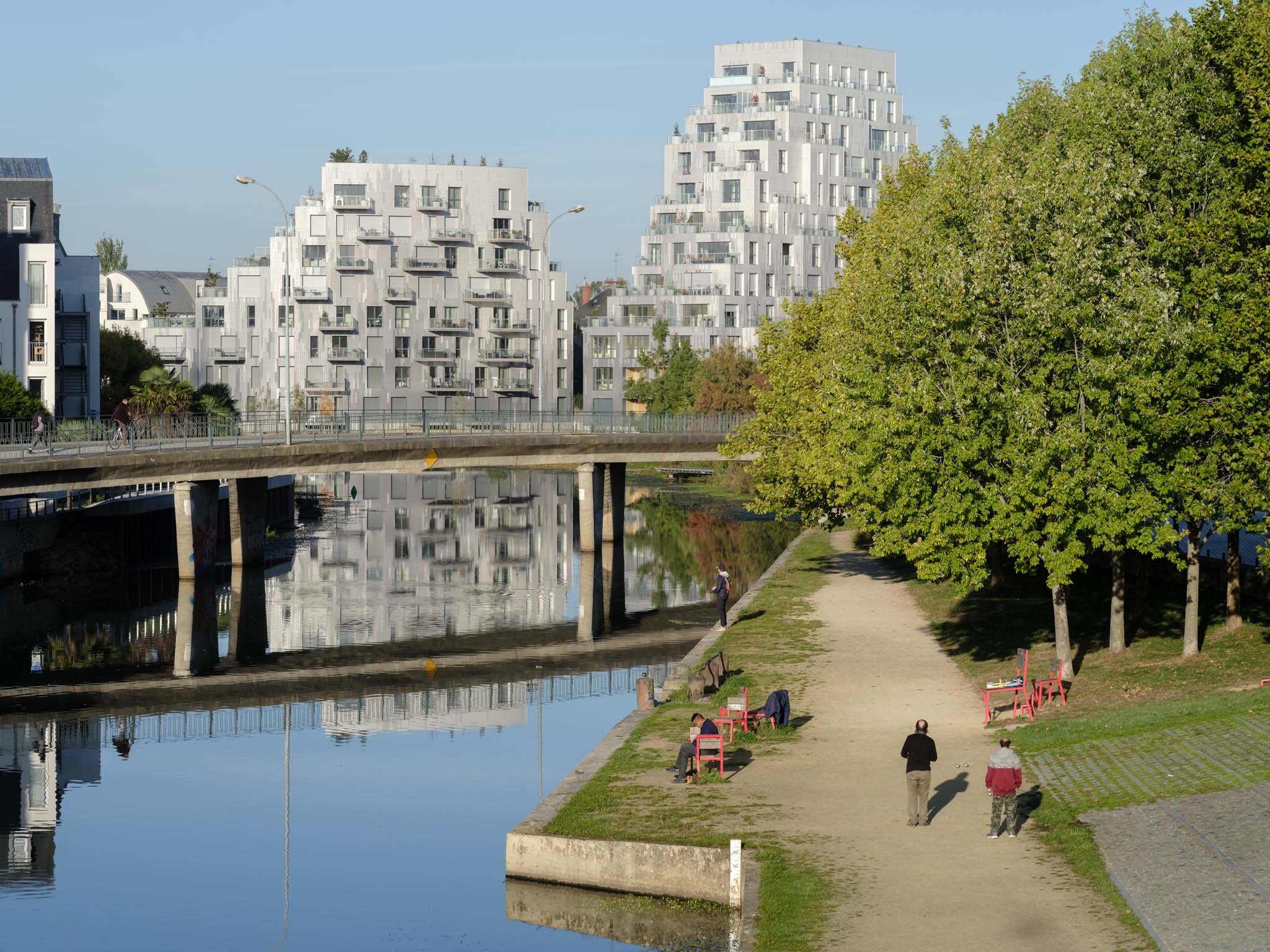

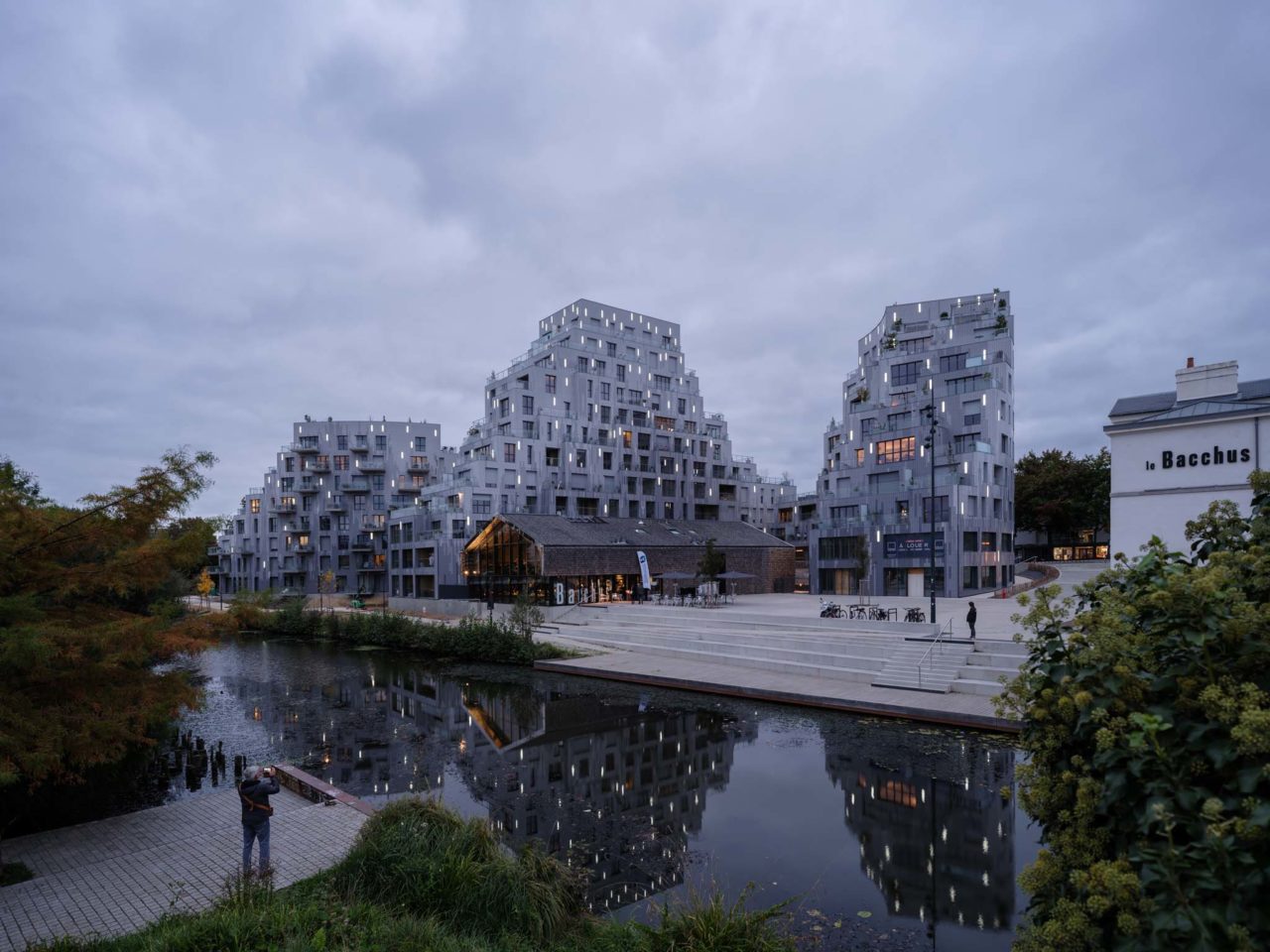
A diverse range of apartment types is spread throughout the building, including 37 homes for social rent and 42 for sale as affordable housing, ensuring that the project offers something for people of all income levels and family sizes. The communal spaces in the buildings feature high-standard finishes and are open to all residents, treating every occupant equally regardless of the price or type of their apartment. With the green surroundings, the location on the water, and the beautiful outdoor spaces, Ascension Paysagère is poised to further add to the liveability of Rennes and can serve as a demonstration of how the city can meet its current housing demand.
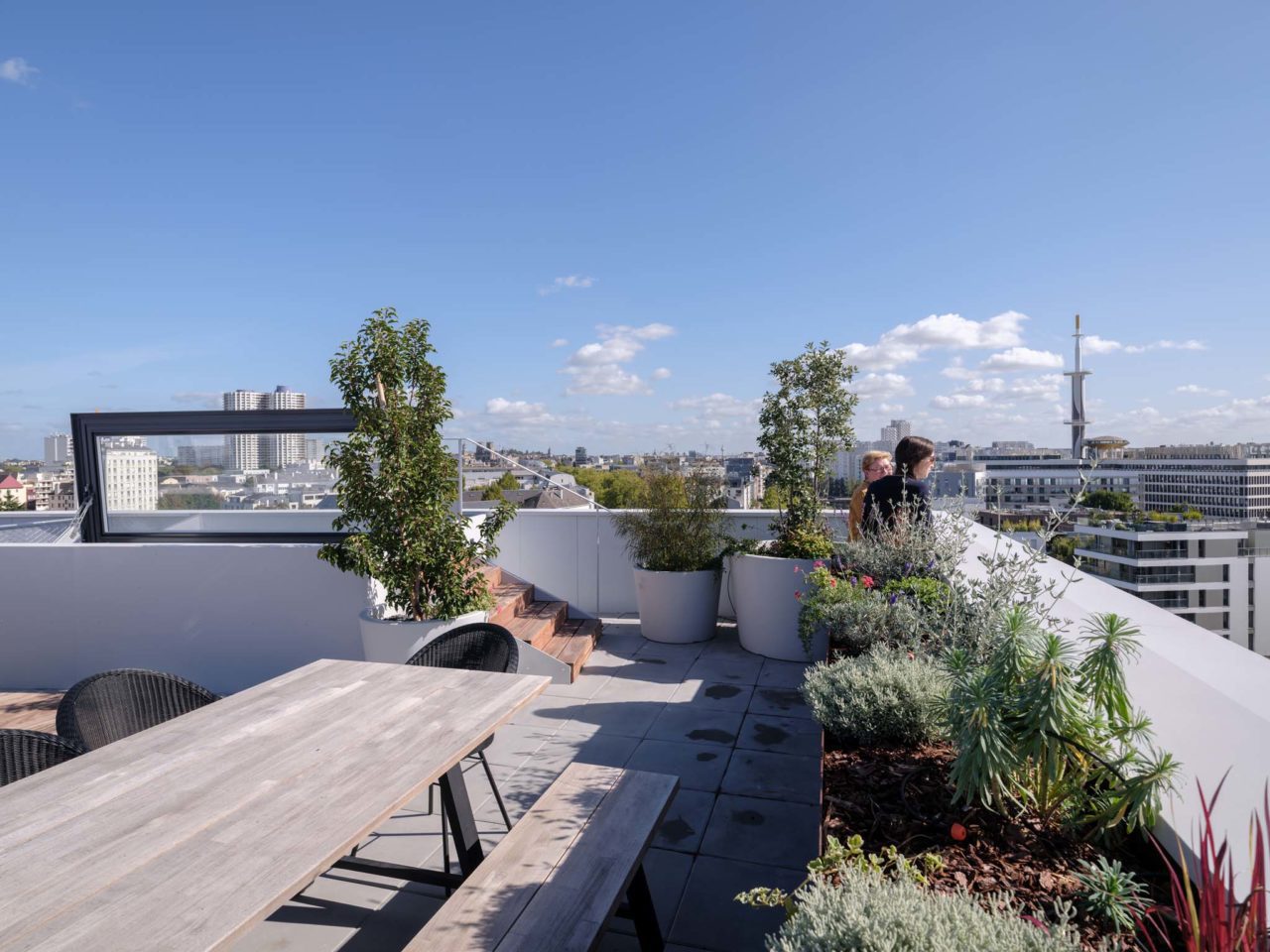
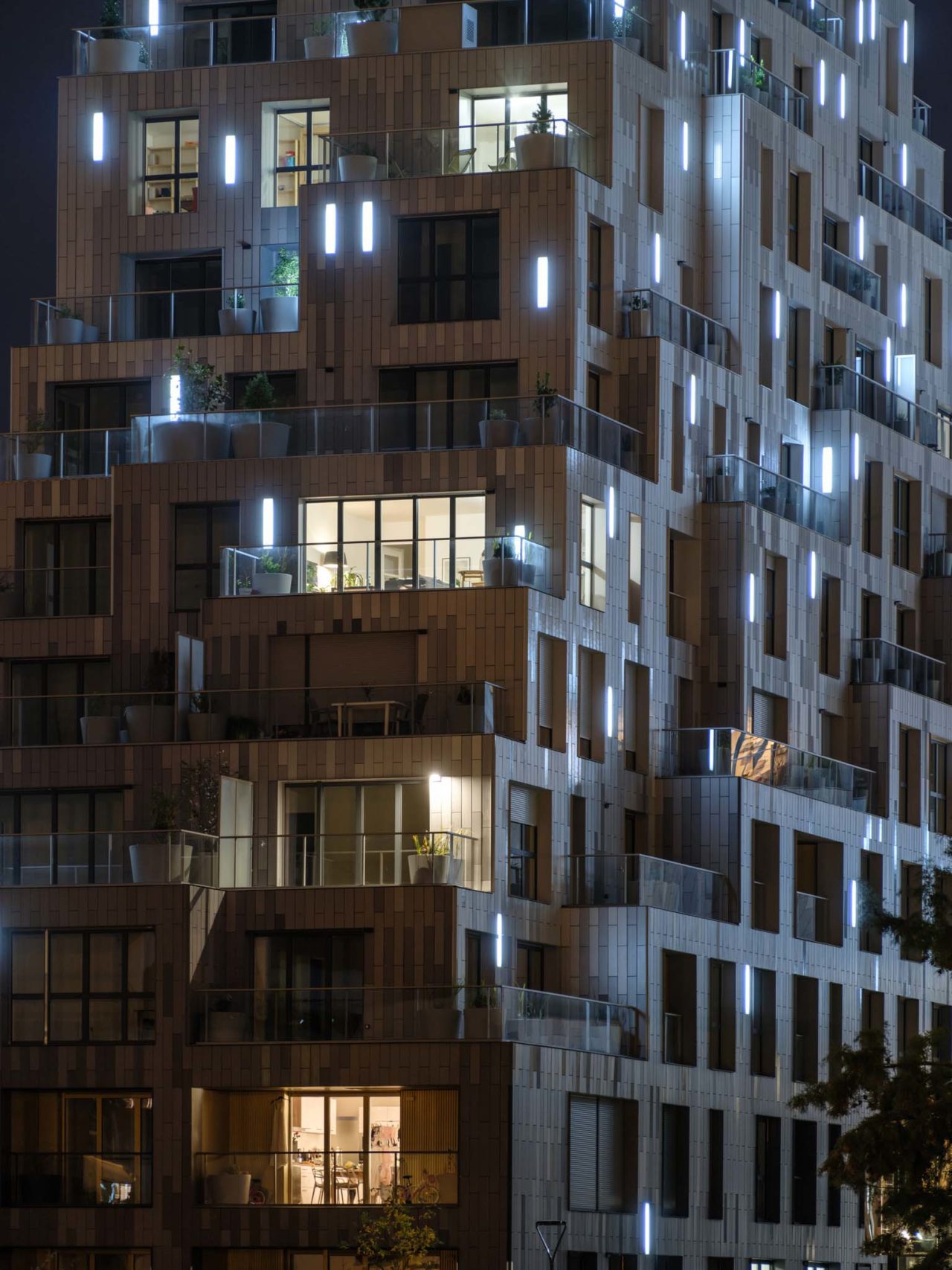


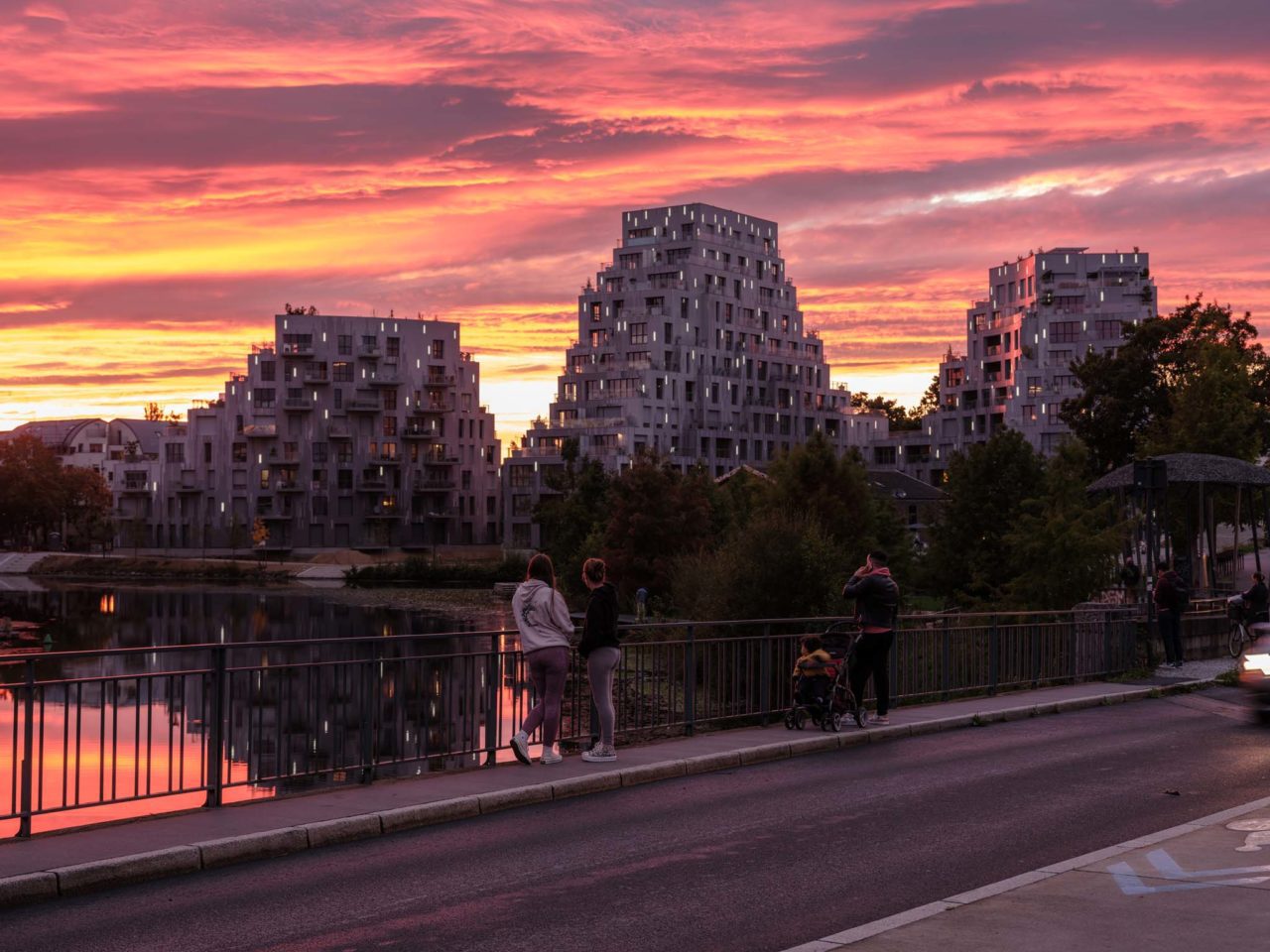

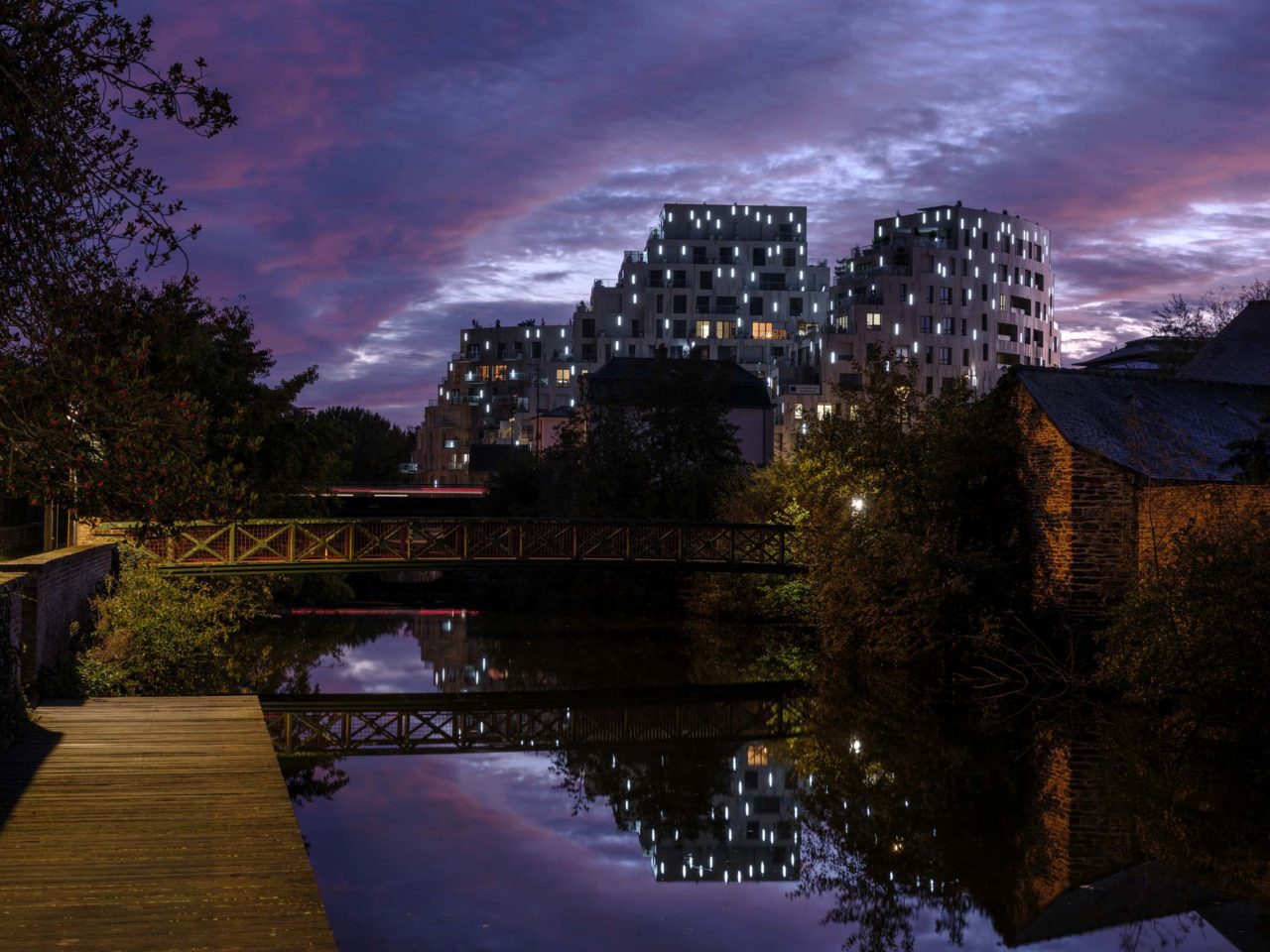



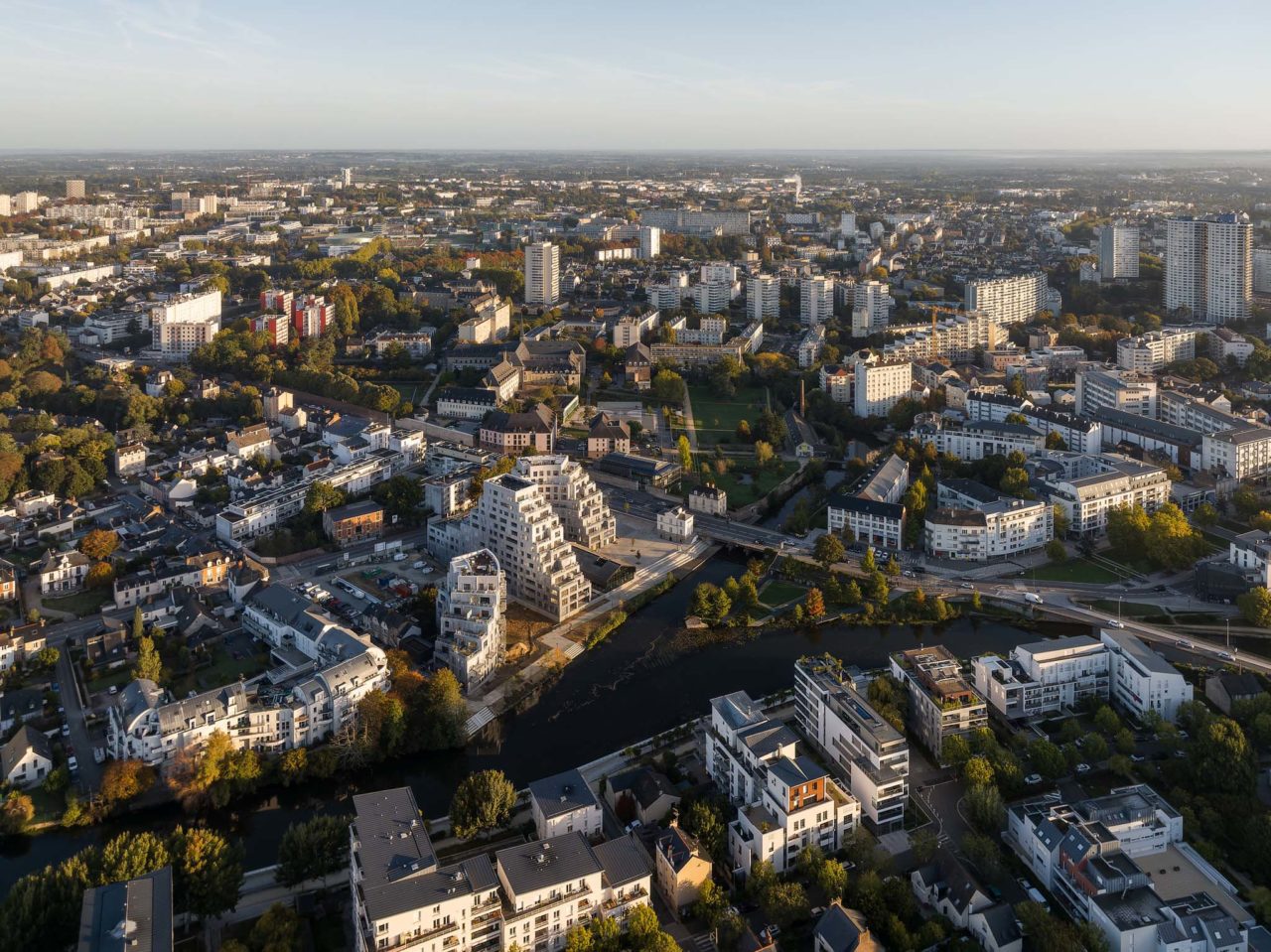
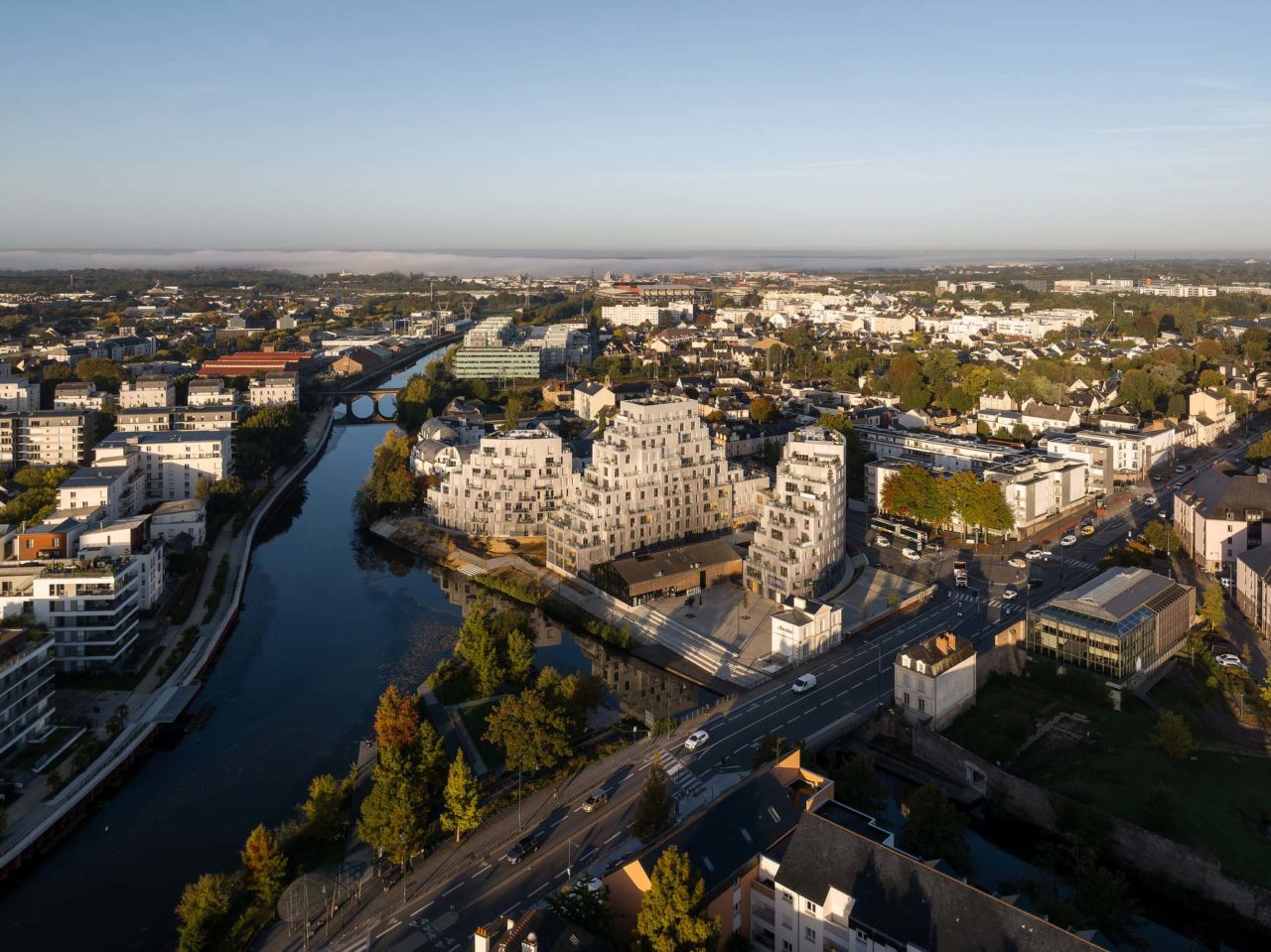

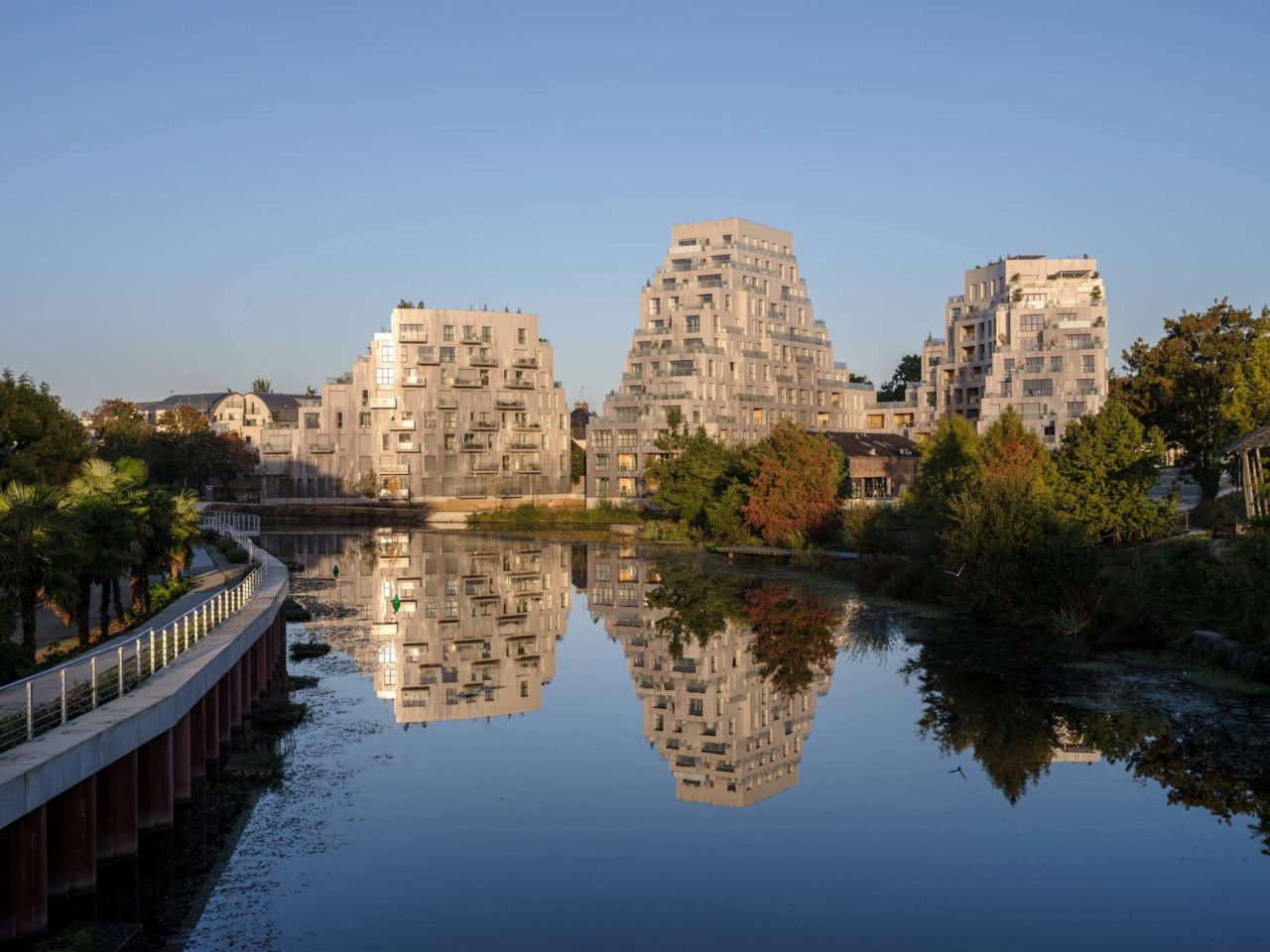
The project description is provided by the architects.

MVRDV was founded in 1993 by Winy Maas, Jacob van Rijs, and Nathalie de Vries. Based in Rotterdam, the Netherlands, they have a global scope, providing solutions to contemporary architectural and urban issues in all regions of the world. Their highly collaborative, research-based design method involves clients, stakeholders, and experts from a wide range of fields from early on in the creative process. The results are exemplary, outspoken projects that enable our cities and landscapes to develop toward a better future.



